Essential Guides
Ocean Mapping
New to Yachting

ESSENTIAL YACHT CREW GUIDES
Learn how to write a memorable yacht cv.

Other essential guides

Mandatory certificates

What you need to know about B1/B2 visa

Download yacht crew CV templates

How to prepare for a yacht interview?

What are the two main yachting seasons?

Big yacht crew hubs you should know about

Is yachting the right choice for me?

Yacht crew salary guide
Explore yacht roles
Our team of expert recruiters have compiled valuable cv advice that applies to all positions. additionally, you can scroll down to download cv templates tailored for each role., 1. keep your cv short and to the point — two pages is ideal.
Captains are exceptionally busy people and often lack time to read an essay-length resume. We would say that you have ten seconds or likely less to really capture their attention. You therefore need to keep your yacht CV concise and to the point. A 2-page CV is ideal since you generally need that much space to properly list your experience and present yourself.
Use your yachting CV as an opportunity to build a quick picture of yourself. Its purpose is to secure an interview, while the interview itself is there to expand on your skills and experience. Include 3 key attributes that really qualify you for the role you are for which you are applying.
2. Use only one font across the entire CV
You want to make your resume as clear and easy-to-read as possible, so using one good font across your CV is advised. Classic fonts are still the best option — Arial, Calibri, Cambria, Garamond, Helvetica etc. are all easy to read, clean and professional.
While your entire CV should only be one font, you can still play around with how you stylise it. For example, increase the size of your name and important sections like “Certificates” or “Professional Experience” and put in bold the name of the yacht you’ve worked on.
3. Include a recent and professional photograph
For many people, adding a photograph may seem like an odd thing to add to their CV, however, on a yachting CV, adding a photo is the norm. The idea behind it is to get another piece of the puzzle on who you are, make people remember you more easily and to help picture you as a crew member on their superyacht.
Your CV photo should professional-looking, with good lighting and a nice background, taken from mid waist up. Try wearing a professional and tidy white polo or a navy polo on a sunny day, as this will make it easy for people to picture you as a crew member already.
Here are a few tips on how to take a good photo:
Show us your smile — this is very important as it will make you look more approachable!
Professional and friendly are the keywords
Make sure your hair is tidy
Wear minimal to no jewellery
No selfies or vacation photos
No sunglasses or hats
Make sure the lighting is good and photo is good quality
4. Include your contact details and key attributes
It sounds so simple, but you would be surprised how many people forget to include this vital information on their yacht crew CV. Yachting is an international industry and your captain may be based anywhere in the world. Include the international dialling code with your telephone number. Make sure you include an email address and Whatsapp contact details, too. You want to make it as easy as possible for the captain to be able to contact you.
You should also include which country you are currently based in, your mailing address, along with your citizenship and date of birth. And, if you speak multiple languages, this is a great thing to highlight on your yacht resume, especially for those applying to work on charter yachts where you will be working with guests from around the world.
5. Make it easy to read (and avoid block colour)
As you are applying for a professional role in a professional setting, your yachting CV should be clear and easy to read. Some colour is ok on a yacht CV, but we would advise that you avoid the latest trend of using block colour to attract attention. Using bold colours will be a distraction from what matters the most, which is the content of your CV. In many cases printed CVs are still used during the hiring process and having coloured blocks not only wasted ink but can also make CV harder to read when printed in black and white.
For the best results, a yachting CV should be elegant, professional and easy to read. By focusing on the content and keeping the format simple, you can create a CV that stands out for all the right reasons.
6. Double and triple spell check
Although it’s easy to make and overlook spelling and grammar mistakes, most Captains respond negatively to them no matter how insignificant they may seem. To some, a single mistake can rule out a well-qualified candidate. This is because it signals that your attention to detail might be lacking or you are not really serious about the job.
Most of us rely on the grammar checker to point out the mistakes by highlighting errors with those little coloured squiggles that appear underneath, but don’t rely on that completely. They will not recognise the difference between a correct word and the right word, or catch homophones such as your/you’re, accept/except etc. So, double check and proofread your CV a few times before sending it.
7. List your referees with contact details
Most of the time, agencies will check your references prior to putting you forward for a new position. The Captains and other HoDs also like to contact previous employers directly to get feedback before offering the position to the candidate.
You should list them starting with your most recent ones and make sure they include:
name of the yacht
email address
phone number
8. Update your yachting CV regularly
While you may not feel as though a lot has changed since you last looked for work, you are likely to have gained a lot of new skills and experience in a short space of time. Make sure to update your yacht CV every time you look for a new yacht job.
Download a free yachting CV template
Now that you know what's needed to create a great CV, go ahead and download a professionally designed free CV template that you can fill out with your information.
Are you ready to find your new ideal job on board a yacht?
Become a member of YPI CREW and connect with our recruiters so they can guide you through your job search.
Each of our recruiters is specialised in crew placement for a particular department and they will do their best to get you an interview on board a yacht. They will also advise you on how to best present your experience and skills and prepare for a yacht job interview.
Explore the latest in yachting

YPI CREW Will be Attending the Superyacht Technology Network Conference in Barcelona

Is a career in the yachting industry a good fit for me?

Webinar Friday, 15th March: How to Start Your Yachting Career as a Superyacht Stew?

YACHT CREW GUIDES
Learn about different positions on board a yacht.

YACHT CREW SALARY GUIDE
Let’s get started. call us on +33 (0)4 92 90 46 10 or email us., our mission, vision and values, mlc 2006 compliance, essential guides, yacht crew positions.
Chief Officer
Second Officer
Third Officer
Chief Engineer
Interior Crew
Head of Service
Head of Housekeeping
Specialist Positions
Spa Manager
Spa Therapist
Personal Trainer & Yoga Instructor
Hairdresser
Mandatory Certificates
B1/b2 visa information, how to write a memorable cv, how to prepare for an interview, yachting seasons, yacht crew salary guide, is yachting the right choice for me, cv templates, ocean mapping, new to yachting.
+33 (0)4 92 90 46 10
![cv in yachting How to write a yacht CV in 2023 [with tips, instructions, and examples]](https://www.visualcv.com/static/59df0c0d6e6c4a5c50da83ffb45b2c29/6285f/yacht-cv.jpg)
How to write a yacht CV in 2023 [with tips, instructions, and examples]
Whether you want to work as a deckhand on a small private vessel or join the large service staff of a superyacht, it’s important to learn how to write a yacht CV.
Working on a yacht can be a fulfilling career. It is a great way to experience the sea, visit different places, meet important people, and have unique experiences. It is also, however, a difficult career. The employee quarters on a yacht typically have little privacy, the days can be long, and the work can be difficult. Further, when you are working on a yacht, you are at sea. You can’t go home until the voyage is over, which could be weeks or even months.
This means that your yacht CV needs to show that not only are you skilled, you have the personality and constitution for working on a yacht.
But if you, like Moby Dick’s Ishmael, find yourself with little or no money in your purse, and nothing particular to interest you on shore, it may be time to write a great yacht CV and see the watery part of the world.
This article will explore all aspects of writing a yacht CV, including:
- What is a yacht CV?
- Yacht CV requirements
Yacht CV certifications
- Yacht CV qualifications
- How to write a yacht CV
A yacht CV is a document describing your yachting skills and experience that you submit to employers as a part of a job application. It will contain details like personal information, work experience, education, and skills.
The yacht experience can vary greatly. Some yachts may have only a single captain on board and a handful of passengers. Others, such as enormous superyachts, may have a large dedicated staff and crew. Yacht jobs can include captain, crew, bosun, mate, deckhand, dock worker, marina worker, chef, sous chef, stewardess, engineer, and more.
The exact details of your yacht CV will depend on your specific career. There are several different paths that might take you to a yacht, and it’s important that your CV has the right details for your specific goals.
- Yacht CV Requirements
If you want to become a yacht employee, sometimes called a “yachtie”, your yacht CV will need to show that you have all the certifications and accreditations for the position you are applying for.
The specific requirements of a yacht CV may depend on what country the yacht company is based in and what countries it will travel to. Because most yacht jobs will require sailing to and from different countries, you will have to be conscious of where the particular yacht job is based and what the hiring requirements are.
Further, the specific qualifications, certifications, and skills that you need will depend on what specific yacht role you are applying for.
If you are looking to work in the kitchen of a yacht, for example, or as wait staff, you will want to list your food safety certifications, your culinary education, and your experience serving.
If you are looking to work as a member of the deck crew, you will need appropriate safety certifications.
Will you be working as a tour guide? Will you have to use the helm, or do any navigation? Will you be dealing directly with customers, clients, or passengers? If so, make sure your yacht CV reflects this.
Yacht CV Certifications
Certain certifications are required to become a yachtie. When you apply for a yacht job, you must ensure that you have the right certifications for your role.
Anyone who works on a commercial ship will need a Standard for Training, Certification and Watchkeeping (STCW) certification.
Also required is an ENG1 Medical or equivalent, which is a certificate confirming that you are medically able to work on a yacht and at sea.
Other certifications, while not strictly mandatory, can improve your CV, such as deckhand training courses and boating certifications like Power Boat 2.
If you are applying for a role in the kitchen or in a hospitality role, you can also look for stewardess training courses, food safety and hygiene certifications, hospitality courses, silver service courses, and more.
It’s important to think carefully about exactly what type of career you are pursuing and what certifications can help you.
Once you have the certifications you need, you can get to work writing your yacht CV. Yacht CV sections include:
Yacht CV personal information
At the beginning of your CV, make sure to add your personal information.
This should begin with your contact details. In your contact information section, include your:
- Email address
- Phone Number
- City of residence
In the USA and Canada, you are not expected to include a picture with your yacht CV. In most European countries, however, a picture will be expected, especially if your position will be guest-facing. Make sure to study the CV requirements of your specific country when preparing your CV. If you provide a picture, make sure it is professional and appropriate.
Some yacht companies also require you to state whether you are a smoker, and whether you have tattoos. You can include this alongside your contact information, or in a separate Personal Details section.
Yacht CV summary
At the top of your CV, begin with a brief professional summary. A summary is a short section, usually only a few sentences or bullet points, that briefly describes you and your experience. It should have a few key highlights, either of key skills that make you a great candidate, or some important achievements from other roles that show what you can do.
A great summary can be what convinces a hiring manager to read the rest of the CV.

Yacht CV work experience
Your Work Experience section is the most important part of your CV. It is the longest section, and the section containing the most detail.
In a Work Experience section, list previous positions in reverse-chronological order, beginning with your current or most recent job and working backwards. In each role, provide a job description that details your responsibilities and achievements in that position.
For each entry, include:
- Company name
- Dates worked
- Job description
If you have experience working on a yacht, you should emphasize your yacht positions, providing them with more detail than you do to other positions. Work Experience entries for yacht jobs can also be formatted differently. For yacht positions, list the name of the vessel, its size, and whether the yacht was private or charter.
For example:
Deep Blue | 103’ | Private Stewardess June 2021 - August 2022
This gives yacht employers a clear idea of what kind of yacht experience you have.
When writing your job descriptions for each role, try to focus on concrete examples of your experience, including achievements and accomplishments. Describing only your basic duties makes for a boring CV.
To come up with achievements, try to brainstorm concrete successes that you contributed to. It can help to consider quantifiable aspects of your job. If you can provide verifiable numbers, your experience will seem more credible and more impressive. For a yacht CV, measurable aspects of previous positions could include the size of the vessel, the length of the voyage, the number of passengers or rooms, event attendance, provisioning budgets, and more.
Further, be sure to use active language as much as possible when describing past experience. Action words make your work experience seem more dynamic, and make you sound like an independent worker who takes initiative and gets the job done. Action words like organized , managed , hosted , spearheaded , and navigated all indicate an employee that employers would be happy to hire.
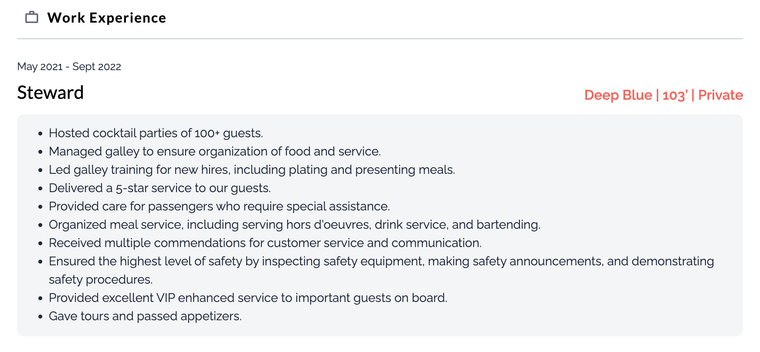
Yacht CV education
The importance of your education will depend on your specific role. If you are applying to work as a server or deckhand, a post-secondary degree won’t be necessary (as long as you have the right certifications). If you are applying as an engineer, however, you will need to show that you have the right academic credentials.
In your Education section, list your degrees in reverse-chronological order, beginning with your most recent degree and working backwards. For each entry, include the:
- Degree name
- School name
- Date of graduation
Generally, a description isn’t needed in an Education entry. If there are particular aspects of your education that you would like to highlight, however, such as GPA, specializations, or a key project, they can be included.

Certain certifications are integral to your yacht CV. If you want to work on a yacht, or any commercial vessel, you will need to show that you have the right safety training and health certification.
This usually means that you need to list your STCW certification and ENG 1 Medical certification. You may also want to include your Power Boat 2 certification. First aid certifications can also be an asset.
However, those certifications may not be enough. Be sure to study the job posting and research the position as much as possible so you know exactly what certifications will be required.
Yacht CV skills
A Skills section is a section of your CV where you list your most important and most relevant competencies. This can include soft skills , like communication and people skills, and hard skills , like electrical engineering or navigation.
A Skills section, while not strictly mandatory, is a great way to make your yacht CV more impressive. Listing all your skills in one place makes it easy for employers to quickly glance at your CV and see exactly what your expertise is.
The easiest way to format your skill section is to simply list your skills in a bulleted list. Sort the list so that your most relevant skills are at the top.
If you would like to draw more attention to your skills, you can make each skill or skill area a heading, and provide a more detailed description of the skill below. With VisualCV, you can even add strength ratings to each skill. This method works great for skills-based CVs .
Yacht CV skills can include:
- Customer Service
- Maintenance
- Firefighting
Yacht CV interests
When you work on a yacht, you will be sharing cramped quarters with all of your coworkers, with very little privacy and no time to yourself. For this reason, it’s important to make sure you are a good culture fit for the vessel. While not mandatory, it can be a good idea to include a brief selection of your interests and hobbies in your yacht CV so the employer can see if you will fit in with the rest of the crew.
- Customize your Yacht CV
Even if you are only applying for yacht jobs, it’s important to customize your yacht CV for every application. Different job postings will have specific requirements and specific skills they are looking for, so it’s important to make sure your CV is a perfect fit. A generic CV won’t be perfect for every application.
To do this, study the application closely, and research the company and vessel to learn as much about it as you can. Then, use what you have learned to carefully customize your CV so that the right skills, experience, and personality are emphasized. Remain truthful, but edit your experience so that it matches the job description as closely as possible.
- Yacht CV example
A dedicated and enthusiastic steward with extensive experience working on yachts and superyachts. Capable of achieving the most demanding targets and objectives whilst remaining focused on delivering a high standard of service at all times. Naturally strong interpersonal skills give me the ability to communicate concisely and articulately with crew and guests. I enjoy being a part of a successful and productive team and have the ability to shine in high pressure environments. I am certified in first aid, ship safety, and health standards.
Work Experience
Steward Deep Blue | 103’ | Private
- Hosted cocktail parties of 100+ guests.
- Managed galley to ensure organization of food and service.
- Led galley training for new hires, including plating and presenting meals.
- Delivered a 5-star service to our guests.
- Provided care for passengers who require special assistance.
- Organized meal service, including serving hors d'oeuvres, drink service, and bartending.
- Received multiple commendations for customer service and communication.
- Ensured the highest level of safety by inspecting safety equipment, making safety announcements, and demonstrating safety procedures.
- Provided excellent VIP enhanced service to important guests on board.
- Gave tours and passed appetizers.
Senior Steward Demeter | 100' | Charter
- Organized interior stewardess duties.
- Made sure the company's SOPs were followed and respected on every voyage.
- Managed catering orders when sailing as a single operator.
- Organized VIP catering on the vessel, meeting preferences of guests.
- Assisted cooking crew and chef in galley when needed
- Organized food provisioning for crew and guests.
- Provided excellent VVIP enhanced service to important guests on board.
- Ensured safety and wellbeing of VIP guests during voyages to various destinations.
- Conducted safety demonstrations prior to voyages and carried out checks throughout the vessel.
- Laundry, cabin service, interior detailing.
Steward Ranger | 60' | Private
- Made beds, including turn downs and fluff ups.
- Led laundry and ironing services for guests and crew.
- Cleaned and maintained heads.
- Prepared yacht for 3 boat shows and multiple cocktail parties with 50+ guests.
- Verified passengers' compliance with safety regulations throughout all stages of voyage.
- Assisted exterior crew support when needed.
- Rostered on various short and long haul routes.
Master in Tourism & Hospitality Management University of Texas
- Provisioning
- Drink service
- Meal service
- Galley management
- Safety demonstrations
- Scuba Diving
- Learning Languages
Certifications
- ENG 1 Medical
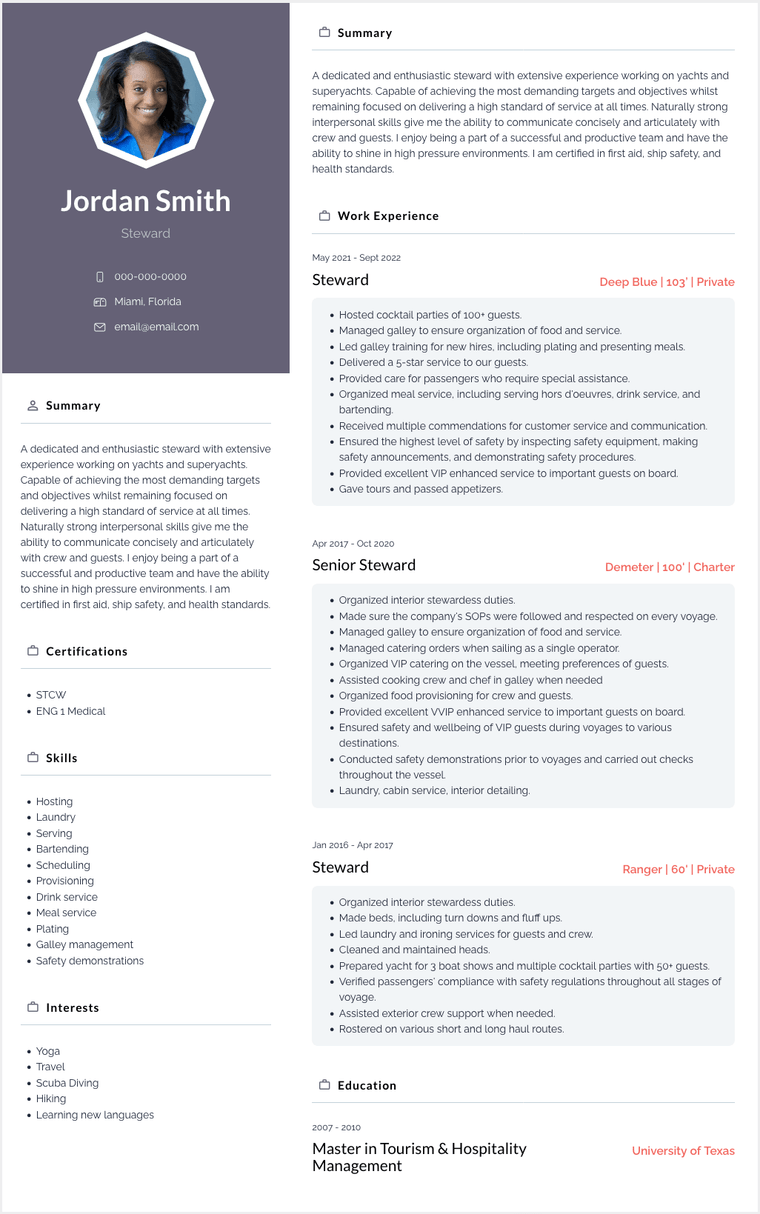
Community Success Manager & CV Writing Expert
Ben is a writer, customer success manager and CV writing expert with over 5 years of experience helping job-seekers create their best careers. He believes in the importance of a great resume summary and the power of coffee.
![cv in yachting The 2023 Resume Writing Guide [+ Job Search Tips and Resume Examples]](https://www.visualcv.com/static/0a451b7c20b67c3a0ce6a7b4a7680f5f/61ca5/Resume_Guide.jpg)
Our 2023 Free Resume Writing Guide is filled with quality job search tips, resume examples and information you need to know before writing your resume or CV.
January 30, 2023

VP Marketing & Resume Expert

A guide to what personal information to include in your CV, no matter where you are applying for a job.
June 16, 2020

Co-Founder & Director
![cv in yachting How to write a resume when you have no education [high school or college]](https://www.visualcv.com/static/759484e76e620bca344714a8b70c05bf/61ca5/how-to-write-a-resume-with-no-education.jpg)
You don't need an education to have a great career, and you don't need a degree to write a great resume.
June 27, 2022
Copyright © 2024 VisualCV

Select Your Language :

How to Write the Perfect Yacht CV [With Template]
If you’re looking to craft the perfect yacht CV, you’ve come to the right place. As the Chief Stewardess onboard a 50m Super Yacht, I’ve been assisting Captains with hiring crew and gathering yacht crew CVs for 8 years.
With my experience, I am familiar with the type of yachting CVs that Captains prefer to see. It is crucial to make a great first impression to ensure that your yacht resume is given proper consideration.
In this article, I break down the essential do’s and don’ts of a Yacht CV.
Scroll down to the end of this article to find a basic Yacht CV Template to help get you started. And yes, it’s free!
You can use this template and edit it accordingly to create your own Yacht Captain CV, Deckhand CV, Yacht Stew CV, as well as an Engineer or Chef Resume. All that’s left is for you to email it to recruiters or hand out physical copies when dock walking.
Table of Contents
What is a CV in Yachting?
There are a few distinct differences between a regular CV and a CV in yachting.
- The main one is that you need to include a photo of yourself! If you do not include a photo, it is likely your yacht CV will be tossed in the bin
- Unlike other CV’s, you also need to include your date of birth
- You will be highlighting your skills and attributes specific to the job you are applying for. It is a great idea to make these edits to highlight what you have to offer
- As you travel to seek work, you will need to edit your location and availability

Layout of a Yacht CV
When a Captain has 20 to 50 yachting resumes on his desk, there is a general easy-to-read layout that they prefer to see.
- It is very important to keep your CV to 2 pages
- Use a simple, easy-to-read font
- If you want to be creative with your colors, go for it. Just make sure the Captain can easily read the font
- Keep your layout clear and simple, making sure to include all of the required information listed in this article
- There are numerous Yacht CV examples online for you to decide your preference. A great tool to use is Canva .
Your Photo for a Yachting CV
You may not be a Yachtie yet, but you need to act the part and look like one. Follow these guidelines for the perfect photo:
- SMILE! You want to look like someone the crew would enjoy having onboard
- Dress in something smart/appropriate, and sell yourself as the professional yacht crew member you want to be seen as. Ideally, a polo so you look like a Yachtie
- Take the photo from about the mid-waistline up
- Stand by a natural background of either a marina, the ocean, or some greenery
- Do not take a selfie! Have someone take this photo for you
Profile/Objective
This is a short paragraph highlighting the position you are looking for and any attributes and skills that make you a good fit for the job. Be very specific about what you write here, and be sure to include attributes that are beneficial to the job you are applying for!
This is the moment the Captain will decide if they continue to read the rest of your Yacht CV or not.

Personal Information to Add to your Yachting CV
Most yachts have very specific requirements when hiring crew, so do not leave out any of the below points:
- Nationality
- Visa’s held
- Tattoo (visible or not)
- Health Status & Smoker (Y/N)
- Languages spoken
- Drivers License
- Email & phone number
- Availability and current location
Yachting Experience
Here, you need to list all of the Yacht Jobs you have held. Be sure to include:
- The name and size of the Yacht
- The dates you were onboard
- The position you held
- Your basic roles, responsibilities, and duties while onboard
- If you have the space, you can include the locations where the vessel cruised
Some of you may not have any maritime experience, and that is ok. If you have done any day work, be sure to include that here and highlight your duties and the dates you were onboard.
Other Non-Yachting Experience
Here, you want to include any experience prior to yachting, even if it is not yachting-related.
Captains like to see any jobs/positions you have held in the past, as skills are always transferable. This gives some insight into what you have been doing leading up to the point of finding a job in yachting.

Qualifications to Include on your Yacht CV
List all qualifications you have relevant to yachting in your Yacht resume.
Remember that yachts like to see add-on skills, so things such as Scuba Diving Instructor, Yoga Instructor, Masseuse, and any other certifications you hold should be included.
Here, you just want to include your highest level of education and when you graduated.
Other Interests/About me/Hobbies
This section of your Yacht CV is your chance to list out a few additional standout qualities, attributes, or hobbies. This gives a bit of insight into who you are as a person and what you enjoy doing in your spare time.
This is very important, as anyone can write anything on a piece of paper, but a reference speaks volumes.
Even if the position you held was not maritime-related, a reference is also a good indication of your character and work ethic in any position you have held in the past.
You really want to get written references wherever possible.

How to Make sure your CV doesn’t get Trashed
- Take the time to write up a good Yacht CV. I can’t tell you how often I haven’t read further than the first line because of a sloppy, disorganized Yacht resume.
- SPELL CHECK! In an industry where you have to be meticulous in everything that you do, spelling and grammatical issues in your Yacht CV are not a good start.
- When you save and email your Yacht CV, be sure to have it saved in a Word and PDF format.
- When you are responding to a job posting, write a short and clear email to the person who put up the post and highlight why you are a good fit for the position and why you want to become a yachtie .
How to Introduce Yourself in an Email
Dear Captain/To Whom it may concern
Please find attached my resume and references in my application for the position of “Deckhand on a 50m Superyacht”. Although I am new to the industry, I believe I would be an asset to your team as I am motivated and driven to succeed in the yachting industry. I am also an avid wakeboarder and love being on the ocean, so I believe I will adapt well and learn quickly. I am not afraid of hard work, and I look forward to having the opportunity to speak with you further.
Thank you for taking the time to view my application.
Kind regards
Downloadable Yacht CV Template
Use this Yacht CV link to download a basic yachting resume, fill in your personal information, and get ready to land your dream job!
Now that you have crafted the perfect Yacht CV, it is time to land your dream job. For those of you wanting to know how to become a yacht deckhand , read here for more information.
For those of you looking to find out how to become a yacht stewardess, read this insider’s guide!

Hi, my name is Lisa, a Chief Stewardess in the yachting industry with 10 years of experience, as well as 8 years of hospitality experience prior to that. Being in the yachting industry has been a whirlwind of adventure, growth, challenges and some of the best experiences of my life, and I am excited to share my knowledge and experiences with all of you.
Ultimate Guide to Dock Walking: 10 Tips on How to Dock Walk
Yacht crew salaries: complete guide to what yacht crew earn, leave a comment cancel reply.
Save my name, email, and website in this browser for the next time I comment.
How to write a yacht crew CV

With thanks to YPI Crew and Van Allen Group
Ask any employing captain or yacht management company and they'll tell you that finding reliable yacht crew is often one of their most challenging and time consuming tasks!

The yachting industry sees one of the highest staff turnover rates yet there are still fewer jobs than there are applicants, meaning there's often strong competition for all vacant positions – from both new and existing crew. As such, it’s important to ensure your yachting CV stands out from the crowd.
We relay what to include and how to format your crew CV to stand the best chance of landing a yacht job.
What to include on a crew CV
The first step in finding your dream job is to ensure your CV is up to scratch. A specialist yacht crew agent will lend great advice and expertise in this area, but don’t forget; a well-presented CV is a CV that shines. By ensuring you deliver a well-formatted and typo-free resume, you ensure that it doesn’t end up in the bin after the first scan read!
1. A professional photograph
In the maritime industry, those CVs without a professional photograph tend to be discarded first.
Remember, a smart appearance is extremely important on board. Make sure you look well groomed, cover any tattoos and remove any piercings (while other industries may have softened their stance towards such things, it's still important in yachting).
You may not realise it, but you have changed a lot in the last three years. It's sad fact of life. With this in mind, be sure to update your photo every year.

2. Your past experience
If you’ve been doing day work, make sure you add each role to your CV as you go (believe us when we say this is the best way to recall everything you do). Include the yacht name and what your duties were, and wherever possible, ask the captain for a reference. If you don’t do this as you go, you're at risk of forgetting your roles and a captain may wonder about gaps in your experience.
Laurence Lewis, director at YPI Crew, recommends listing up to 10 years' of past work experience, if you have it. “Don’t disregard job experiences, skills, or education credentials whether relevant or seemingly irrelevant to your new career," she noted. "Employers will want to build a global picture of who you are and will perhaps want to see how versatile you are. Big gaps in CVs should also be explained. Define what your unique selling point is and mention it in your introduction.”
3. Add references
It's always useful to include a few professional references at the end of your CV if possible. Another good tip is to ask employers to endorse you on LinkedIn.
How to format your crew CV
Typically, you have between three and six seconds to catch the captain’s attention. Captains don’t have long to look through applications, so your CV needs to stand out right from the start. Keep it to a maximum of two pages in length - this will help your chances of landing your dream yacht job.
Studies show that people often scan pages diagonally rather than linearly, often giving up reading bullet points after the third point and moving further down the page instead. With this in mind, make sure to include your most recent employment and qualification first, and move your most impressive skills and attributes to the top of lists.
Opt for a classic font that is both professional and aesthetically pleasing, and use subheadings and bold fonts to keep things organised. Lewis added, “The key to writing an effective CV is simplicity, clarity and tidiness. As you only have a very short time to grab the captain’s attention, we recommend that you ‘test-run’ your CV with friends or family.”

CV template
Required information:.
- Your full name
- A current and professional passport photograph
- A current mobile number, location and email address
- Your nationality
- The details of any visas that you may currently hold with expiration dates
- Your marital status
- Your smoking habits, visible tattoos and piercings
Below this, you should then include:
- A concise profile or objective paragraph summarising your experience and unique selling point
- Your listed yachting experience, including employment dates, yacht name and size and the position held (with a list of duties, listed in reverse order with the most recent first)
- Your additional qualifications and relevant work experience (again listed in reverse time order)
- Your hobbies and interests
- Details of your references or a few short endorsements
Top tip: Don’t forget to take a quick look over your social media accounts before applying for any new yacht job. Prospective employers will almost certainly check out your public-facing profiles to learn more about you. It's important, therefore, to remove negative comments and inappropriate photographs, or switch your profiles to ‘private’. Failing to do so could mean that you never make it to interview stage.
Make use of LinkedIn. It's essentially a platform that allows you to create an online CV - only with scope to include much more information than your actual CV. It's being used more and more by yachting professionals so ensuring you're discoverable on the platform can only be helpful.
Proofread and request feedback
It may sound obvious, but before printing or sending any CVs make sure you proofread for spelling and grammar mistakes. After all, you can’t boast about having ‘great attention to detail’ when there are obvious mistakes on your CV!
Ask someone in the industry for his or her opinion on your CV. You should question them on its presentation, its content and ask them to do a final proofread before committing to printing off a few dozen copies to be distributed.
Pick up further crew tips for yacht job interviews , or search for yacht crew agents on Yachting Pages.
Tried & Tested

A jacket completes any crew member's uniform so it's an important garment to get right. In this Tried & Tested, Sea Design pits eight popular jackets against one another to determine which one is best for superyacht crew in 2023.
iAQUA creates high-performance, technologically advanced underwater scooters. In this Tried & Tested, a team of experienced testers have rated and reviewed the AquaDart Pro and AquaDart Nano series to reveal the stand-out iAQUA sea scooter.
In our 2022 Tried & Tested, yacht toy specialist EAMS and a group of captains and crew review a selection of the very best luxury water toys on the market. Find out which toy was crowned the winner...
SeaYou will be returning to Marina Genova for its 4th edition on Thursday 18th April and Friday 19th April, 2024....

MB92 Group and Pinmar, part of GYG Ltd, has partnered to launch a sustainability initiative in collaboration with the Ba...

Popular Articles
Finished reading now find your perfect supplier..
Search our industry-leading directory for over 20,000 superyacht suppliers, providers and marinas.

- Charter & Brokerage
- Yacht Design & New Builds
- Tenders & Toys
- Superyacht Events Calendar
- Career & Training
- Departments
- Superyacht Crew Finances
- Sustainability
- Shipyards and Marinas
- Health & Wellbeing
- Polar Region
- Our Services
- Meet the Team
How to Put Together The Perfect Yachting CV
.png)
Your Yachting CV (Curriculum Vitae) is most likely the first point of contact a superyacht has with you. Therefore, putting together the Perfect Yachting CV is essential . After all, it’s your personal sales pitch to the Captain or Head Of Department looking to hire you!
A Yachting CV differs significantly from a land-based CV. It features maritime jargon, qualifications, and a photo. As well as this, it also requires a particular layout that needs to tick the relevant ‘industry standard’ boxes. Imagine a Captain or Chief Stew has 150 CV’s on their desk. If your CV doesn’t look like a Yachting CV, it’s probably going straight to the shredder. It needs to look the part!
Today we have teamed up with yachting entrepreneur, Jess aka The Seaworthy Stew . Jess has created a simple step-by-step guide providing all you need to create a perfect, professional yachting CV:
1. Primary Information
Start by filling in all primary information within the top half of the page, including your phone number, email, date of birth, nationality, and passport. Also include your health status (if you’re COVID vaccinated), marital status, driver’s license, your location and availability.
- Phone numbers: I recommend having a local sim card when you are in an area to ensure a boat can contact you at any time. WhatsApp is extensively used within the industry. Therefore I recommend getting a WhatsApp number. Once you are in the industry, you will most likely have various international sim cards. It’s a good idea to keep one consistent WhatsApp number. Then, use the local number you may have at the time for phone calls and data.
- Email: If your email isn’t professional sounding (e.g. rubytherockstar@hotmail.com), create a new one.
- Location : Ensure this is kept up to date, as captains will use this location to work out your flight paths and travel arrangements when you secure a job.
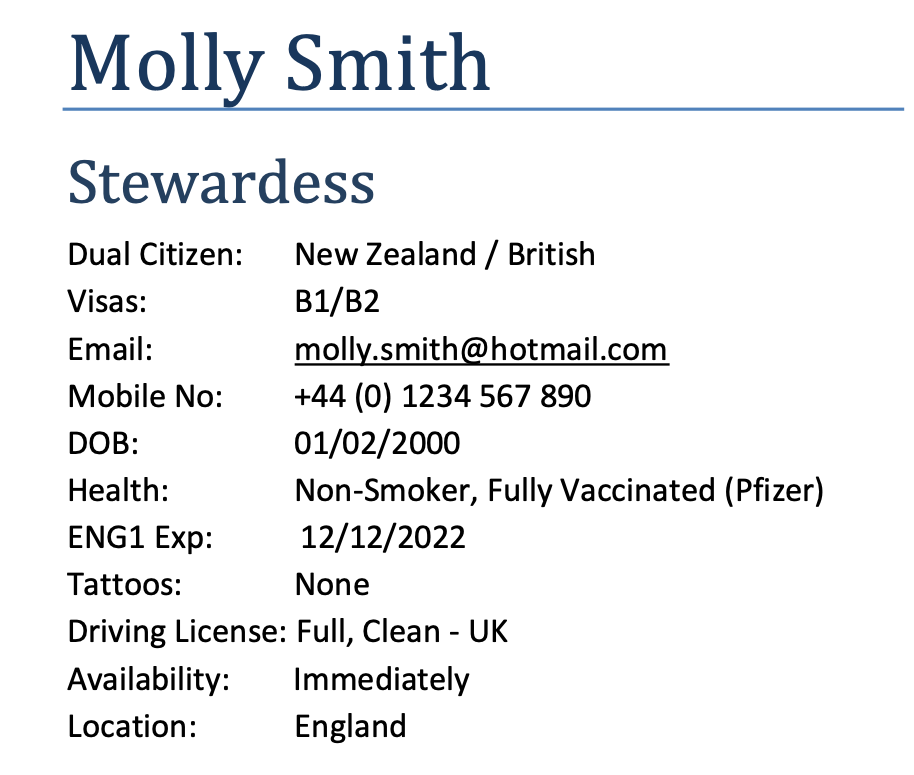
2. Qualifications
Here you will need to separate your maritime qualifications (mandatorily required certificates) and other qualifications to avoid clutter.
For your Maritime Certifications such as STCW, PDSD and Food Hygiene Level 2, add the expiry dates or the year of completing them if an expiry date is not applicable.
If you have other relevant qualifications , you can create another heading and include certificates such as University Degrees or Diplomas, Post Graduate Education, PADI or SCUBA (Dive Certifications), Carpentry or Electrician (Deck related only), Floristry course, Mixology or Wine Courses.
3. Work Experience and your transferable skill s
In this section, you need to list your land-based and/or yachting experience. If you’re green , you will need to pull apart all your land-based work experiences, h ighlighting the duties/skills that could be transferable to the yachting industry.
If you have worked in restaurants, hotels, events or the aviation or cruise ship industry, this is all highly transferable to yachting. It is essential to pull out any key skills and include them under your type of experience, such as Hospitality Experience or Other Experience. It is not necessary to write all aspects of the job. Choose the duties that are the most relevant to your desired yachting role. From here, you can further break down and add relatable skills to help explain your background and what you’re capable of.
Once you have day work experience, you can add this to your ‘Yachting Experience’ heading, including all of the key duties you had and the time you were on board .
If you have Yachting Experience, highlight everything unique about your position and the direct responsibilities you had. Then you need to back up these with examples as proof. For example, instead of writing you have ‘Wine Knowledge’ you need to think about how you used this skill. It may have been a food and wine pairing menu for charter guests, here you SHOW OFF your talent’s with a practical example. Think about what your working highlights were whilst onboard. What did you LOVE to do? Maybe you have been setting up themed nights and planning events such as beach BBQs.
For your yachting experience, we should write it as per the below:
- MM YY – MM YY M/Y NAME, 80 M OCEANCO • 2200GT – STEWARDESS
- Followed by a paragraph about the position (This format also applies to any day work experience).
Your hobbies should be a brief paragraph where you can add a few quirky things, outdoor activities, and water-sport activities. If you’re aiming for an interior role, you can add something creative if it suits you (do not put socialising).
It’s a good idea to look at transferring your hobbies into skills. As the hobbies section is an excellent place to put secondary skills superyachts may look for. For example, you may have on your CV that you’re into photography and filming. They could turn this into taking crew profile pictures, creating a guest charter and welcome videos.
It is not uncommon for charter boats to request crew to have additional skills that guests may find interesting or helpful. It allows charter brokers to sell a yacht having valuable crew skills such as kite-surfing or a pilates teacher onboard. These skills are also usually listed under your crew profile in the boat’s Welcome booklet .
5. The Perfect Yachting CV Personal Profile
This section is one of the LAST steps as it ties together all your experience and skills. It’s also the most important paragraph of your CV and should be six sentences or less and sit right below your primary information.
Your Personal Profile is where you persuade the reader to carry on looking at your CV. Your profile should concisely and effectively display who you are, your skills and strengths relevant to the role and the experience to back it up. Therefore, I recommend saving this key paragraph to last as it’s a summary and the hook, line and sinker as to why you are fit for the job.
I suggest splitting your profile into three sections:
- What are you searching for?
- Who you are
- What can you offer?
Bullet point things you might mention under each section , then list the qualities that position you as the ideal person for the job.
If you’re green for the ‘what you’re searching for’ section, I suggest broadening this statement . For example:
“I aim to secure a position as a yacht stewardess/deckhand/chef/engineer position on a motor or sailing yacht.”
You want to avoid being too picky with what you want based on no experience yet.
When you are writing what you can offer, you need to know what you can bring to the table that is unique? You can use a mix of hard and soft skills to position yourself as well-rounded. Last, back up your skills with evidence. Don’t just add ‘attention to detail’. You need to give an example of this.
6. References
Put down a minimum of three references you can rely on to have positive things to say about you. Ensure their information is current when writing on your CV and structure it so the most recent reference is at the top with correct contact details as they will no doubt be checked.
7. Your CV Headshot
Your photo is a really important part of your CV. It needs to show you are professional, smiling and looking the part. This means you will need to dress in a white polo shirt or white blouse (ironed) and ideally have a background of yachts in the distance or water. If you can’t take a picture in these environments, a plain white background is ok. TIP: When you are taking your photo, have your shoulders back and put your hands behind you as it helps to stand up tall, also face into the sun (at the perfect time in the day), so you don’t have shadows on your face. Natural makeup and neat hair are best for females. For males, ensure you are well-groomed.

Other important yachting CV rules to follow:
- Your CV should be no longer than two pages
- Font sizes should be between 10.5 and 12
- Correctly labelled and saved as:
NAME SURNAME CV
- Send your CV as a PDF document to a yacht or PDF and .doc to yacht crew agents
- Make sure there are NO Spelling and grammar errors
- List certificates and experience in reverse chronological order
A yachting CV can be the difference between you getting a job and being overlooked among a sea full of other candidates. If you need some help, check out The Yachting CV Toolkit . It’s a comprehensive toolkit that gives you everything you need to create a professional Yachting CV that ticks the industry boxes, and stands out from the rest. It includes:
- Three CV Templates;
- How to recognise the transferable skills from your land-based jobs and apply them to your new CV;
- How to use power words to communicate your message firmly and confidently;
- The secret personal profile formula;
- Advice on how to create the perfect CV headshot (no fancy equipment required!)
- And a full CV review.

Jess is an Australian superyacht stewardess with six years of experience working on superyachts. Jess helps aspiring yacht crew through her online courses. She teaches you what is required to prepare for a career as a superyacht stewardess and the proven steps to land your first job successfully. If you think she can help you check out her website – www.theseaworthystew.com or follow her on Instagram @theseaworthstew.
For access to our Superyacht jobs board and the latest vacancies within the industry, register here.
Superyacht Content
Related articles
The crew network – top jobs this week, international women’s day 2024: hearing from the women in the superyacht industry, private or charter. which is best for you, a deckhand’s guide for tender driving experience.

Popular Posts
- Best Local Spots To Refresh During Palma International Boat Show
- Best And Worst Times To Find Yacht Crew Jobs – Fort Lauderdale
- Floatist: Strategic Partnership Will Transform The Croatian Charter Market
- The Best Superyacht Marinas In New Zealand For Yacht Crew
- Q&A With Yachties Run Wild & Building Women’s Fitness Community In Palma
Social media influencer and digital brand expert.
Superyacht Content brings you the latest in social news for the superyacht industry.
Keep up to date with us across our social channels, and don’t forget to hit that share button!
- Superyacht News
- Superyacht Jobs
- Superyacht Marketing
Join our Newsletter
- Your Name First Last
- Your Email *
Copyright © 2023 Superyacht Content | Website Design by Zonkey
Privacy | Credits | Get in Touch
How to Create Your Perfect Yachting CV: A Step-by-Step Guide

If you’ve ever dreamed of a career in the world of luxury yachting, then you’re probably aware of the importance of a well-crafted Yachting CV. Whether you’re looking to land your first deckhand position or aiming for a more senior role as a yacht captain, your CV is your ticket to the high seas. In this blog, we’ll guide you through the essential steps to create an impressive Yachting CV that will help you stand out in this competitive industry.
- Gather Relevant Information
To begin, gather all the necessary information you’ll need for your CV. This includes:
- Personal details: Full name, contact information, and a professional-looking photo.
- Objective statement: A brief, tailored statement about your career goals and what you bring to the table.
- Certifications and licences: List all relevant qualifications, such as STCW certificates, Eng1, or a captain’s licence. If you do not have the relevant certifications CLICK HERE
- Yachting experience: Detail your previous yachting roles, including positions, yacht names, sizes, and responsibilities.
- Skills: Highlight skills like navigation, safety, maintenance, and any additional expertise that sets you apart.
- Education: Mention your educational background, including relevant degrees, courses, and institutions.
- References: Include references from previous employers or colleagues who can vouch for your skills and professionalism.
- Structure Your CV
A well-structured CV is easy to read and makes a strong impression. Use the following format as a guideline:
- Contact Information
- Objective Statement
- Certifications and Licences
- Dates of Employment
- Responsibilities and Achievements
- Be Specific and Quantify Your Achievements
When describing your yachting experience, be specific about your duties and responsibilities. Use action verbs and quantify your achievements where possible. For example:
- “Managed a crew of 6 deckhands and ensured the maintenance and cleanliness of a 120-foot luxury yacht.”
- “Navigated the yacht safely through multiple international waters and logged over 10,000 nautical miles.”
- “Implemented a new inventory management system, reducing waste by 20% and saving $10,000 annually.”
- Tailor Your CV for Each Job Application
Customise your Yachting CV for each job application. Highlight the skills and experiences that align with the specific requirements of the yacht and crew position you’re applying for. A tailored CV demonstrates your genuine interest in the role and makes you a more attractive candidate.
- Proofread and Polish
Your Yachting CV is a reflection of your professionalism, so it must be error-free. Proofread for spelling, grammar, and formatting errors. Consider seeking feedback from colleagues or mentors in the yachting industry to ensure your CV is up to par. You could even send it over to us CLICK HERE !
Your Yachting CV is your ticket to a rewarding career in the luxury yachting industry. By following these steps and presenting your qualifications, experience, and skills effectively, you’ll increase your chances of securing your dream yachting job. Remember, attention to detail and a tailored approach can make all the difference in standing out in this competitive field. So, set sail with confidence and let your Yachting CV be your passport to the high seas.
Start your dream career and apply now!
https://www.yotspot.com
Impartial training and careers advice
Call us: +441983 280 641
+441983 280 641
How to write a Yachting CV
If you are new to the Superyacht industry, then you have probably not written a yachting CV before. If you need help writing a Yachting CV, our guide will explain what to do and what not to do.
Writing a Yachting CV differs from a CV that you may write for a land-based job. For example, on a yachting CV, you are asked to provide a picture and give your date of birth, which is considered discriminatory if you apply for a land-based job.
At Flying Fish, we help hundreds of customers new to the Yachting industry write a professional yachting CV. The yachting CV is so important, we include ono-to-one support during our Superyacht Deckhand and Superyacht Steward/ess courses. This forms part of our Career Support Service.
First, a bit of background to a Yachting CV
Your CV is a summary of your skills, experience, and interests. It explains why you are a good fit for the Deckhand or Steward/ess position, plus all the skills and experience you have to offer the yacht.
Research indicates that the reader forms an opinion about your CV in just a few seconds. Therefore, it is crucial to ensure that your CV is engaging and flawless.
The yachting CV must include character references, as talking to somebody who knows you gives confidence to the employer.
Your yachting CV needs to create a good first impression and be brief and to the point. It’s a sales pamphlet, not an essay.
The Yachting CV breaks down into seven topics. You don’t have to use our CV template format. Some crew agents may want the headings in a different order. You can design your CV template but ensure you have covered the seven headings below.
- Personal information
Qualifications
- Work/Yachting experience
Hobbies and interests
A few golden rules.
Before we dive into the detail, it is worth highlighting a few important points:
You must be honest. Don’t worry if you have not worked on a superyacht before, it’s not an obstacle to getting a job. If you are a smoker say so. If you have visible tattoos then say so and let the employer decide.
Working on a yacht, whether a small sailing yacht or a large superyacht your character is key. The employer will probably pay more attention to your character/work ethic than your qualifications.
Getting the format right
How you design your yachting CV is just as important as its content. The font you use, and how you present it also play a significant role. Choose a font like Calibri, 11 points, or Verdana 10 points as they are easy to read. Make sure you save your CV as a PDF file or similar format that can be opened on both a MAC or PC.
Personal Information
This is the easy bit, follow the prompts in our CV template. Make sure you add the international dialing code, +44, as an example. Add your current location but bear in mind this will change.
Social Media
Today we all have an online profile. You will add your name, DOB and upload a photo to your CV. Yachts interested in you will likely look at your social media to see what you do in your free time.
Ensure your Instagram, Facebook, and any other profiles confirm what you say about yourself in your CV. For example, if you tell the reader that you are a non-smoker only to find recent images on your social media feeds of you smoking, it will cast doubt in the readers mind to your honesty or perhaps lead to an awkward conversation during your interview!
Superyacht crew are likely to contact you on WhatsApp, Facebook Messenger, or Instagram. A Captain may ask you to send your CV via one of these channels. We recommend you become familiar with the process of sending your Yachting CV, via WhatsApp, and Facebook Messenger.
You must add a passport-sized head and shoulders image to your CV. No selfies! Ask someone to take a photo of you in the morning or evening when the sun is lower to prevent squinting.
It’s a good idea to wear a polo or T-shirt, no branding – something comfortable. No need for a shirt or tie; after all, you won’t be wearing one onboard.
Don’t apply filters or Photoshop your image to enhance it. Keep the size of your photo below 250kb. Many boats download CVs using satellite, so file size is important.
Girls, if you have long hair, tie it back so that we can see your face. We advise wearing minimal makeup and jewelry. Men need to be clean-shaven; make sure your hair neat and tidy.
Below are some examples of CV photos taken of Flying Fish customers.
Start with the most important qualifications first: STCW Basic Safety Training , PDSD , ENG1 medical , Powerboat Level 2 , etc. All your qualifications should be bullet-pointed.
If you have any additional skills relevant to the job you are applying for, then include them here, (Watersports Instructor, Diving, PT Instructor, Beauty, massage, to name a few). We don’t need to know your GCSE results.
Yachting experience
If you have worked on a yacht before, sailed with family or friends, worked on a ferry, dive boat, etc. then here is where you provide a brief summary of your experience so far.
Detail when you were onboard, your position, and the yacht’s name. If you don’t have any yachting experience, don’t worry, remove this section from your yachting CV.
Work experience
Place your work experience chronologically, with your most recent position first. Please describe the skills you learned and how you exceeded expectations in your job, using only two or three sentences.
This is arguably the most important section; what do you like to do in your spare time? Generally, yacht crew are outgoing people who like sport, travel, and adventure.
If you share a passion for the outdoors, you will fit in well. Maybe you play a sport, keep fit, are a keen photographer, have run a marathon, or enjoy travel. All these are relevant as they show your character.
You must list two references in the same format as shown in our Yachting CV template, name, telephone, email. Your references may come from a previous employer or somebody that has worked with you. Your reference can’t come from a family member!
Most recruitment agents ask for a written reference as part of their recruitment process.
What to do next
Now that you have finished your Yachting CV, there are a couple more tasks to do.
- Ask somebody to read your Yachting CV to ensure it makes sense and reads well.
- Spell-check your CV, then spell-check it again!
- Save your CV as a PDF. You can open a PDF on any device. A PDF is a condensed file, so if the reader downloads your CV, it doesn’t chew up all data.
- Your Yachting CV may change. You will probably want to change your photo, and your location will change when you start looking for work. If you perform day work, we will add the yacht you worked on and the tasks you completed to your Yachting CV.
Once you are happy with your Yachting CV, you can start looking for your dream job. You can search for Superyacht jobs on Facebook, YotSpot , or through a Superyacht Recruitment Agency .
Learn about working in the Superyacht Industry by downloading our free guide on working on Superyachts.
FIND YOUR FIRST SUPERYACHT CREWJOB
Industry advice and tips about starting your new career on a superyacht.


YACHTING CV FORMAT GUIDE
Here is a simple guide for those of you who may be considering trying to get a job in the superyacht industry. Writing a Yachting CV is a little different to a normal CV that you may write for a land based job. For example, if you are writing a CV for a job on a yacht, you are asked to provide a photograph and give your date of birth, which is considered discriminatory if applying for jobs on land.
A photo is important, if you don’t include one on your CV, it considerably reduces your chances to almost nil of being considered for a position.
When having a photo done for your CV, don’t apply filters or Photoshop to enhance the image. Prospective employers want to see the real you.
A smart appearance is incredibly important onboard and your profile picture should reflect this. Your photo should be head and shoulders only. If you have long hair then tie it back. Minimal makeup and jewellery are advised. Men need to be clean-shaven, or a tidy beard, certainly well-groomed and hair also neat and tidy. Cover tattoos and remove any piercings.
Keep your photo size below 250kb. Many boats are downloading using satellite so file size is important. This also applies to using heavy colour blocks on a CV. Too much can be slow to download and don’t over elaborate on the graphics.
Your CV could perhaps be described as a flyer to generate an interest in you and your experience leaving the greater details to discuss at interview stage. Don‘t list everything , just the good stuff and the things that will hopefully make you stand out from the rest!
Keep it clear, concise and factual. Too much graphic design also distracts the reader from the main objective of reading the facts so it is suggested that you don’t set it out like a comprehensive Michelin restaurant menu or a brochure for a yachting holiday!
Another tip worthy of considering when in your search for your dream job on a yacht, is to make sure all your profiles on social media are appropriate before your CV is in the inbox of a potential employer. This also applies to your WhatsApp photo. If you are calling yourself a non-smoker on your CV and there are photos of you having a cheeky smoke somewhere out there on the one of socials, take it down, or you’ll very likely be caught out. Prospective employers will almost certainly check out your public-facing profiles to learn more about you. It’s important, therefore, to remove negative comments and inappropriate photographs, or change your profiles to ‘private’. Failing to do so could mean that you may never make it to interview stage.
Carefully proof read and check for grammar and punctuation mistakes. If attention to detail is listed on your CV as being one of your key skills and your CV is littered with typo’s, then this will also work against you.
The CV format here is a simple example of how to go about putting together your first CV for the industry if you haven’t done so before.
There are many templates available to use online so have a play around. Just keep in mind and implement the advice suggested and you’ll be good to go.
Here's another post you may find useful:

Wanting to get a job in the superyacht industry?
Wanting to get a job in the superyacht industry? Let us guide you in how to get started. You’ve binged on ‘Below Deck’ in lockdown
© 2024 All rights reserved
Privacy Overview
Yacht Crew Training Fort Lauderdale
Your career choice stay the course, experienced & knowledgeable yacht training professional yacht training is the only accredited iyt megayacht training provider in florida, stcw 10 training, international convention of standards of training, certification & watch keeping for seafarers the qualification standards for masters, officers and watch personnel on seagoing merchant ships., +300 google & facebook reviews 5 stars rating - the favorite among crew, marshall islands master & mate, marshall islands 350 gt master & 500 gt mate for the marshall islands 350 gt master & 500 gt mate course you must possess a 200 gt master of yachts or greater., mca officer of the watch, certificates of competency - 500 - 3000 gt training - oow yachts less than 3000 gross tons seven (7) different modules are required for a certificate of competency, mca compliance - oow, officer of the watch - yachts up to 3000 gt accreditation is widely recognized by all major yacht regulatory bureaus, insurance companies, as well as charter & management agencies., mca master modules, certificates of competency - 500 - 3000 gt certificates of competency (coc's) are required in order to command vessels up to 500 gt or 3000 gross tons., professional yacht crew training for careers in yachting, what is stcw training & stcw 10 basic safety.
The International Convention of Standards of Training, Certification and Watch Keeping for Seafarers defines the training necessary for all persons employed at sea. Starting out requires the completion of basic safety training courses which are compulsory requirements for all yacht crew.
STCW Refresher Program (STCW 10 Refresher / Revalidation)
Have You Satisfied the STCW Five Year Requirement – Providing Evidence You Have Maintained the Required Competence in Basic Training? STCW 10 Refresher / Revalidation entry requirements stipulated that you have previously been issued with a STCW certificate (STCW 95). This course is a requirement of the amended STCW 2010.
On-Line Tacht Crew Training Courses
Professional Yacht Training, Fort Lauderdale offers select on-line training courses through our training partner, VIRSEC. From MCA Approved STCW ISPS Maritime Security trainings to Hostile Environment Awareness & Antiterrorism trainings, VIRSEC’s fully online courses are user-friendly, affordable and easily accessible.
We provide the Fort Lauderdale yacht crew training courses you require for MCA compliance and which are widely accepted for the private and commercial operations of both power & sailing yachts up to 3000 gross tons. The accreditation is widely recognized by all major yacht regulatory bureaus, insurance companies, as well as charter & management agencies.
The mca officer of the watch certificate consists of seven different modules ( oow crew training courses ), these are required to be completed for the mca officer of the watch (yachts less than 3000 gt) certificate of competency and are preparation for the mca oral exam., fort lauderdale yacht crew training school, professional yacht training (pyt usa) offers international yacht training (iyt) for professional and recreational yacht crew. iyt worldwide master of yachts 200gt certificates are mca recognized and essential for working on board a yacht., since its founding in durban, south africa, in the year 2000, pyt has established an enviable reputation and we are delighted to now be able to bring our special approach to the us and offer selected courses in fort lauderdale., pyt reached a milestone in april 2013 when our subsidiary, pyt usa , was granted the license to offer iyt worldwide courses in fort lauderdale , florida thereby allowing us to bring our style of teaching to one of the main centers of the mega yacht industry., yachting careers | yacht jobs, start your yacht crew training in fort lauderdale, florida and work on a yacht, no surprises – no hidden costs.
Your costs are inclusive of exam fees and training boat time.
You receive a commercial-grade certification, not an “endorsed” leisure ticket.
Full MCA approval for 200 ton Masters Certificate.
Fort Lauderdale Training Facilities
Centrally located in the heart of the “yachting capital of the world”.
Within walking distance of crew houses and marinas.
Crew agencies are also just steps away.
Professional & Knowledgeable Staff
Experienced trainers give you the individual attention often lost in bigger classes.
We provide a wide experience of training for all levels of international yachting.
Committed to succeed & progress towards the fulfillment of your career ambitions.
Frequently Asked Questions (FAQs)
How do I write a yachting CV?
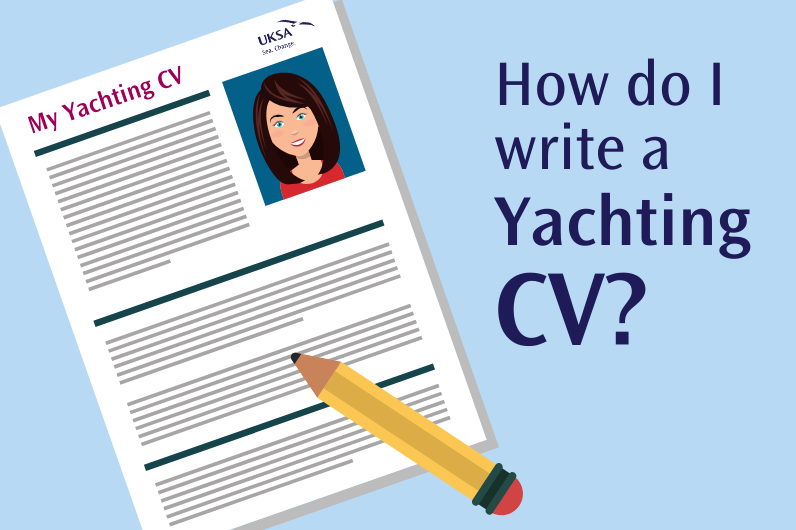
Are you looking to work at sea, perhaps as a deckhand or a steward/stewardess on a superyacht, as a flotilla or charter skipper for a holiday company or even as part of an offshore windfarm team? We have put together a fantastic guide on how to write your all-important eye-catching CV.
Making sure your CV gets placed on the ‘yes’ pile is key to securing your first job in the yachting industry.
Here at UKSA, along with our specialised Careers Courses designed to teach you the necessary skills required to enter into the yachting industry, we also have a Careers and Industry Guidance Team dedicated to helping you make that first step into your dream job.
Not only do we provide industry talks and workshops, we also set up networking opportunities alongside a recruitment service, and with this we offer interview techniques and CV-writing training, with one-to-one support.
What is so special about a yachting CV?
A yachting CV is different from the CVs we are taught to write at school. There is a specific format which you need to follow and you are required to include information about yourself that you might find a little shocking and discriminatory at first, such as your photo, your date of birth as well as your nationality!
Before we discuss the nitty-gritty of a yachting CV it’s important to understand that the yachting industry has an extremely high turnover so when a position becomes available, an employer, crew agent or management company will have a huge number of CVs to sift through. Your CV needs to stand out above the rest and state why you are the right person for the role, all in an initial 5-10 seconds!
So, how do I write my yachting CV?
Your CV should be clear, concise, using full sentences and a font size no smaller than 11. The layout is extremely important; it must be pleasing to the eye. Make sure your margins line up, the headings and font style match throughout and that your CV is no more than 2 pages long. All phone numbers (both yours and those for your referees) must be in the international format (eg +44). Check for grammar and spelling mistakes and ask someone to proofread it.
You must be truthful! With social media today, anyone can search for you using the information provided on your CV. Don’t pretend to be someone you’re not. If you’re not into dinghy sailing , then don’t say that you are, and if you smoke, then don’t state that you don’t. If caught lying on your CV your application will simply be rejected, or worst still, you could be black-listed by the employer, crew agent or management company (and the yachting industry is a very small industry!).
What else should I think about when writing my CV?
Social media.
Make sure that when an employer searches for you (and they will!) that you have either set your privacy settings so high that they can’t find you, or that you have removed all scandalous photos from your social media accounts; a potential employer won’t want to see you looking a bit worse for wear at a festival! What they will want to see is how you’ve described yourself and your interests matches what they find on Facebook and Instagram.
Top tip: fill your social media accounts with articles relevant to the industry you’re looking to enter into. For example, if it’s the superyacht industry then follow relevant groups and crew agents and share interesting articles pertinent to the industry.
So, where do I start?
The sections.
We have listed below a full list of the sections you’ll need to include in your yachting CV. You can also download our Yachting CV Template here .
Name and Position
Make sure your name (first name and surname) stands out in a larger font at the top of the page and include the position you’re seeking either next to, or under your name. Try to avoid using middle names as this can be confusing.
It is imperative that you include a photo of yourself otherwise your CV will be discarded immediately. This needs to be a head and shoulders shot of you looking professional and dressed correctly for the position you’re applying for. For those of you looking to enter into the superyacht industry, you must wear a white polo or shirt without logos. Boys must be clean shaven with short, tidy hair.
Top tip: if you can, have water and/or boats in the background and do smile!
Personal details
This is where you list the following:
- Phone Number (in the international format)
- Email Address which must be easy to copy, sensible and professional
- Date of Birth
- Nationality (just state where you’re from – do not state the colour of your skin)
- Health – include “ ENG 1 ” (medical certificate which you will be required to obtain prior to accepting a job) and state if you’re a non-smoker and have no tattoos. If you have any visible tattoos then mention that here. A visible tattoo is one that is not hidden by a polo shirt and a pair of shorts.
- Languages – only to be included if you speak languages in addition to English
- Driving licence – if you only have a provisional or do not have one at all then delete this
- Current Location – there is no need to be too specific; UK or South of France is enough
- Availability
This is a really important section as it needs to encourage a potential employer to read the rest of your CV. Grab the reader’s attention in 4-6 lines showing them your personality, transferable skills and experience. It should be very specific to you and focus on why you have decided on a career in yachting. State what position you’re looking for and what your end goal is (eg I am looking for a position as a deckhand with a view to one day becoming an officer of the watch ).
Maritime Qualifications
List these in order of importance – eg if you have your Professional Yachtmaster Offshore then state that first with your STCW next. List your qualifications as bullet points in two columns in order to save space and for a better overall appearance. Make sure you include all your qualifications relevant to the yachting industry including any dinghy or diving qualifications you’ve obtained previously. If you have your commercial drone pilot licence then include this here. Only put down the top level of each qualification so if you have Day Skipper , don’t include Competent Crew .
Maritime Experience
This section gives you the opportunity to drill down on all of your water-based experience. Include all your previous sea time whether it be from courses, employment, work experience, holidays or voluntary work. Put a new heading for each entry and write a few lines about each one.
Previous Employment
Include all your previous non water-based employment, work experience or voluntary work here. Think about the transferable skills that you have gained from those experiences and bring them to the attention of the reader. You might have skills in hospitality, manual labour and time-management, have a strong work ethic or good organisational skills. Perhaps a previous job required you to be well-presented and with the ability to deal with high-net-worth individuals. These are all important and transferable skills to focus on in this section.
You do not need to go into great detail in this section. Include your university/school/college, the year when you obtained your degree/A levels/BTEC/GCSEs and a summary of your grades (eg 7 GSCSEs grades A-C). Note that GCSEs does not require an apostrophe! Put your most recent achievement first.
Hobbies and Interests
Even though this section will be towards the bottom of your second page it is another very important section where your potential employer can learn what type of person you are and whether you’re likely to be a good fit for the boat or company. Make sure you sound interesting and as someone who’d be a good addition to a crew or team. Just to reiterate, you must not lie!
You should try to list 3 referees here with their contact details (name, position, company, telephone number written in the international format and email address). DO NOT say “available on request”. If you already have a written reference then you can add this as a third page to your CV. The quicker an employer can get hold of your references, the more likely you are to get offered the job. Do make sure you’ve asked each of your referees for their permission and let them know that they might be contacted. Previous employers, instructors or teachers are ideal.
Latest posts
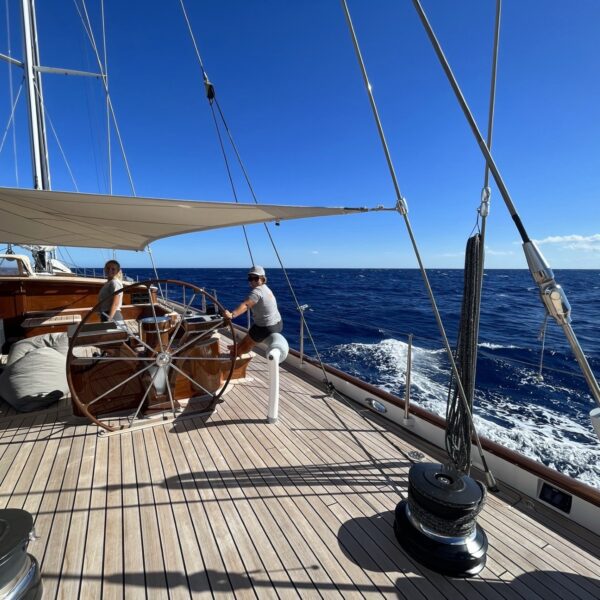
Superyacht Deckhand CV example
As jobs go, working on a superyacht is pretty exciting, especially if you love to travel.
But it can’t all be sunshine and sea views, you still need to prove you’ve got what it takes to maintain the yacht and take on any other tasks handed to you.
This requires a shiny CV that’s shore to impress the recruiter. Find out how to write an interview-winning application using our top tips and superyacht deckhand CV example below.
CV templates
Superyacht Deckhand CV example

This CV example illustrates the ideal structure and format for your Superyacht Deckhand CV, making it easy for busy hiring managers to quickly identify your suitability for the jobs you’re applying for,
It also gives some guidance on the skills, experience and qualifications you should emphasise in your own CV.
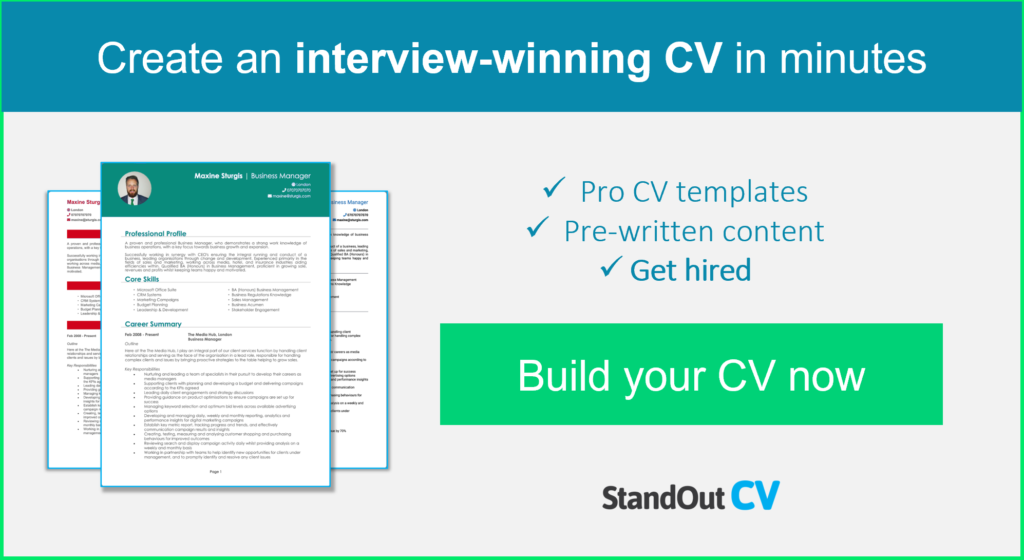
Superyacht Deckhand CV format and structure
If you focus purely on the written content of your CV but ignore the style and layout, your efforts could end up wasted.
No matter how suitable you are for the role, no recruiter wants to spend time squinting and trying to navigate a badly designed and disorganised CV.
Instead, make sure to organise your content into a simple structure and spend some time formatting it for ease of reading – it will ensure every recruiter and hiring manager can read your CV with ease.

Tips for formatting your Superyacht Deckhand CV
- Length: Even if you’ve got tons of experience to brag about, recruiters don’t have time to read through overly lengthy CVs. Keep it short, concise and relevant – a CV length of 2 sides of A4 pages or less is perfect for the attention spans in today’s job market.
- Readability : By formatting your section headings with bold or a different colour font and using bullet points to break up large blocks of text, you can help busy recruiters quickly scan through your CV. This makes it easier for them to find important details without wasting time.
- Design & format: While it’s okay to add your own spin to your CV, avoid overdoing the design. If you go for something elaborate, you might end up frustrating recruiters who, above anything, value simplicity and clarity.
- Photos: You can add a profile photo to your CV, if you want to add some personality to it, but they are not a requirement the UK, so you don’t have to.
Quick tip: Creating a professional CV style can be difficult and time-consuming when using Microsoft Word or Google Docs. To create a winning CV quickly, try our quick-and-easy CV Builder and use one of their eye-catching professional CV templates.

CV structure
Divide your CV into the following major sections when writing it:
- Name and contact details – Head your CV with your name and contact details, to let the reader know who you are and how to contact you.
- CV profile – A brief paragraph which summarises your skills and experience and highlights why you’re a good match for the role.
- Core skills list – A snappy, bullet-pointed list of your most relevant skills.
- Work experience – A structured list of your work experience in reverse chronological order.
- Education – A summary of any relevant qualifications or professional training you’ve completed.
- Hobbies and interests – An optional section, which should only be used if your hobbies are relevant to the jobs you’re applying to.
Now you understand the basic layout of a CV, here’s what you should include in each section of yours.
Contact Details

Start off your CV with a basic list of your contact details. Here’s what you should include:
- Mobile number
- Email address – It’s often helpful to make a new email address, specifically for your job applications.
- Location – Share your town or city; there’s no need for a full address.
- LinkedIn profile or portfolio URL – Make sure the information on them is coherent with your CV, and that they’re up-to-date
Quick tip: Delete excessive details, such as your date of birth or marital status. Recruiters don’t need to know this much about you, so it’s best to save the space for your other CV sections.
Superyacht Deckhand CV Profile
Recruiters and hiring managers are busy, so it’s essential to catch their attention from the get-go.
A strong introductory profile (or personal statement , for junior candidates) at the top of the CV is the first thing they’ll read, so it’s a great chance to make an impression.
It should be a short but punchy summary of your key skills, relevant experience and accomplishments.
Ultimately, it should explain why you’re a great fit for the role you’re applying for and inspire recruiters to read the rest of your CV.

How to write a good CV profile:
- Make it short and sharp: Recruiters have piles of CVs to read through and limited time to dedicate to each, so it pays to showcase your abilities in as few words as possible. 3-4 lines is ideal.
- Tailor it: Before writing your CV, make sure to do some research. Figure out exactly what your desired employers are looking for and make sure that you are making those requirements prominent in your CV profile, and throughout.
- Don’t add an objective: Want to talk about your career goals and objectives? While the profile may seem like a good space to do so, they’re actually much better suited to your cover letter .
- Avoid generic phrases: If your CV is riddled with clichès like “Dynamic thought-leader”, hit that delete button. Phrases like these are like a broken record to recruiters, who read them countless times per day. Hard facts, skills, knowledge and results are sure to yield far better results.
Example CV profile for Superyacht Deckhand
What to include in your superyacht deckhand cv profile.
- Experience overview: Start with a brief summary of your relevant experience so far. How many years experience do you have? What type of companies have you worked for? What industries/sectors have you worked in? What are your specialisms?
- Targeted skills: Make your most relevant Superyacht Deckhand key skills clear in your profile. These should be tailored to the specific role you’re applying for – so make sure to check the job description first, and aim to match their requirements as closely as you can.
- Important qualifications: Be sure to outline your relevant Superyacht Deckhand qualifications, so that anyone reading the CV can instantly see you are qualified for the jobs you are applying to.
Quick tip: If you are finding it difficult to write an attention-grabbing CV profile, choose from hundreds of pre-written profiles across all industries, and add one to your CV with one click in our quick-and-easy CV Builder . All profiles are written by recruitment experts and easily tailored to suit your unique skillset.
Core skills section
Next, you should create a bullet pointed list of your core skills , formatted into 2-3 columns.
Here, you should focus on including the most important skills or knowledge listed in the job advertisement.
This will instantly prove that you’re an ideal candidate, even if a recruiter only has time to briefly scan your CV.

Important skills for your Superyacht Deckhand CV
Boat Handling – Operating and manoeuvring various watercraft, including motorboats, tenders, and water sports equipment.
Navigation – Utilising knowledge of basic navigation principles, charts, and GPS systems to assist with route planning and navigation tasks.
Safety Protocols – Maintaining familiarity with maritime safety procedures, including life-saving equipment operation, fire safety, and emergency response.
Maintenance and Repair – Completing routine maintenance tasks such as cleaning, painting, and basic repairs for both the vessel and its equipment.
Knot Tying – Mastering various types of knots and line handling to secure the vessel and assist with docking and anchoring.
Guest Services – Providing exceptional guest services, including assisting with water activities, setting up dining areas, and ensuring guest comfort.
Tender Operations – Safely launching, operating, and retrieving tenders and other watercraft used for transporting guests and supplies.
Weather Awareness – Utilising knowledge of weather patterns to monitor changing conditions to ensure the safety of the vessel and passengers.
Deck Maintenance – Maintaining the cleanliness and appearance of the deck, including teak care and general upkeep.
Effective Communication – Working seamlessly with the yacht’s crew and guests, especially during docking, anchoring, and water-based activities.
Quick tip: Our quick-and-easy CV Builder has thousands of in-demand skills for all industries and professions, that can be added to your CV in seconds – This will save you time and ensure you get noticed by recruiters.
Work experience
By this point, employers will be keen to know more detail about you career history.
Starting with your most recent role and working backwards, create a snappy list of any relevant roles you’ve held.
This could be freelance, voluntary, part-time or temporary jobs too. Anything that’s relevant to your target role is well-worth listing!

Structuring each job
Whilst writing your CV, it’s essential to look at it from the eyes of a recruiter.
If they’re met with giant blocks of text which are impossible to navigate, they might get frustrated and skip onto the next CV.
Instead, make use of the 3-step structure shown below, to give them a pleasant reading experience.

Start with a brief summary of your role as a whole, as well as the type of company you worked for.
Key responsibilities
Next, write up a punchy list of your daily duties and responsibilities, using bullet points.
Wherever you can, point out how you put your hard skills and knowledge to use – especially skills which are applicable to your target role.
Key achievements
Lastly, add impact by highlight 1-3 key achievements that you made within the role.
Struggling to think of an achievement? If it had a positive impact on your company, it counts.
For example, you might increased company profits, improved processes, or something simpler, such as going above and beyond to solve a customer’s problem.
Sample job description for Superyacht Deckhand CV
Work for a leading superyacht management company based in Oban, assisting with the operation and maintenance of yachts during passages in Scotland and Scandinavia.
Key Responsibilities
- Assist with mooring and anchoring procedures, ensuring the safety of the vessel
- Perform regular deck maintenance, including cleaning, painting, and varnishing
- Conduct routine checks on navigation equipment and assist with chart plotting
- Work with the crew to optimise stockpiling and storage logistics
Quick tip: Create impressive job descriptions easily in our quick-and-easy CV Builder by adding pre-written job phrases for every industry and career stage.
Education section
Although there should be mentions of your highest and most relevant qualifications earlier on in your CV, save your exhaustive list of qualifications for the bottom.
If you’re an experienced candidate, simply include the qualifications that are highly relevant to Superyacht Deckhand roles.
However, less experienced candidates can provide a more thorough list of qualifications, including A-Levels and GCSEs.
You can also dedicate more space to your degree, discussing relevant exams, assignments and modules in more detail, if your target employers consider them to be important.
Hobbies and interests
Although this is an optional section, it can be useful if your hobbies and interests will add further depth to your CV.
Interests which are related to the sector you are applying to, or which show transferable skills like leadership or teamwork, can worth listing.
On the other hand, generic hobbies like “going out with friends” won’t add any value to your application, so are best left off your CV.
When putting together your Superyacht Deckhand CV, there are a few key points to remember
Always tailor your CV to the target role, even if it means creating several versions for different roles.
Additionally, remember that the structure and format of your CV needs just as much attention as the content.
Good luck with your job search!

All guides , Deckhand , Stewardess , Yacht Jobs
How to become a yachtie.
- November 1, 2023
“Ahoy there, future yachties! Are you ready to embark on an exciting and luxurious career on the high seas?” If the idea of working on a yacht, traveling to exotic locations, and catering to the needs of the rich and famous sounds like a dream come true, then you’re in the right place. In this comprehensive guide, we’ll explore the ins and outs of the yachting industry, from the essential skills and certifications needed to make a splash, to tips on building a strong resume and making valuable connections in the yachting world. We’ll also discuss the various career paths available, from starting out as a deckhand to eventually taking the helm as a captain. Finally, we’ll delve into the yachtie lifestyle, and how to strike the perfect balance between work and play while living and working on the world’s most luxurious vessels. So grab your deck shoes and let’s set sail on this exciting journey to becoming a yachtie!

1. Discovering the Yachting Industry: Opportunities and Requirements
The yachting industry offers a wide range of career opportunities for those who are passionate about the sea and luxury vessels. From deckhands and engineers to chefs and stewardesses, there is a position for every skill set and interest. To begin your journey in this exciting field, it is essential to understand the requirements and qualifications needed for each role. This will help you determine which path is best suited for your skills and aspirations.
Before diving into the world of yachting, it is crucial to familiarize yourself with the certifications and training necessary for your desired position. For example, aspiring deckhands should obtain their STCW (Standards of Training, Certification, and Watchkeeping) certification, while engineers may need to complete an MCA (Maritime and Coastguard Agency) approved course. Additionally, it is essential to have a valid passport, a seafarer’s medical certificate, and potentially a visa, depending on the country you plan to work in.
Once you have acquired the necessary qualifications, it is time to start networking and job hunting . Many yachties find their first job through word-of-mouth or by connecting with others in the industry. Attending boat shows, yachting events, and joining online forums can help you make valuable connections and learn about job openings. Furthermore, registering with a reputable yacht crew agency can increase your chances of finding the perfect position. Remember to create a professional CV and be prepared for interviews, as competition in the yachting industry can be fierce.
2. Essential Skills and Certifications for Aspiring Yachties
Entering the world of yachting requires a unique set of skills and qualifications, which are essential for ensuring a successful career. Obtaining the necessary certifications is a crucial step in becoming a yachtie, as these credentials demonstrate your competence and commitment to the industry. Some of the most important certifications include the STCW (Standards of Training, Certification, and Watchkeeping) Basic Safety Training, which covers essential safety and survival skills, and the ENG1 Medical Certificate, which confirms your fitness to work at sea.
Aside from certifications, aspiring yachties should also focus on developing their soft skills and practical abilities . Excellent communication, teamwork, and problem-solving skills are highly valued in the yachting industry, as crew members must work closely together to ensure smooth operations and guest satisfaction. Additionally, proficiency in various tasks such as cooking, cleaning, and maintenance is crucial, as yachties are often expected to perform a wide range of duties on board. By honing these skills and obtaining the necessary certifications, you will be well on your way to a rewarding career as a yachtie.
3. Building a Strong Resume: Tips for Landing Your First Yacht Job
As a newcomer to the yachting industry, it’s essential to create a compelling resume that showcases your skills, experience, and passion for the job. Start by highlighting any relevant experience you may have, such as working in hospitality, customer service, or a related field. If you have any certifications or licenses, be sure to include them as well. When crafting your resume, consider the following tips:
- Keep it concise: Aim for a one-page resume that’s easy to read and understand.
- Use a professional format: Choose a clean, modern design that highlights your most relevant information.
- Include a personal statement: Write a brief introduction that explains your interest in the yachting industry and what makes you a great candidate for the job.
Networking is a crucial aspect of landing your first yacht job, so attend industry events and connect with professionals in the field. This can help you learn about job opportunities, gain valuable insights, and make a lasting impression on potential employers. Additionally, consider joining online forums and social media groups dedicated to yachting to expand your network and stay informed about the latest industry news.
Finally, be persistent and proactive in your job search. Apply to multiple positions, even if they’re not your ideal role, as this can help you gain experience and make connections within the industry. Don’t be discouraged by rejection – it’s a natural part of the job search process. Instead, use it as an opportunity to learn and improve your resume and interview skills. With determination and a strong resume, you’ll be well on your way to becoming a successful yachtie.
4. Networking in the Yachting World: Making Connections that Matter
Establishing a strong network is crucial for success in the yachting industry. Building relationships with fellow yachties, captains, and industry professionals can open doors to new opportunities and help you advance in your career. Attend industry events, such as boat shows and yacht crew meetups, to meet like-minded individuals and expand your network. Don’t be afraid to introduce yourself and engage in conversations, as this can lead to valuable connections and potential job offers.
Utilizing social media platforms is another effective way to network in the yachting world. Join Facebook groups, follow industry influencers on Instagram, and connect with professionals on LinkedIn to stay informed about the latest news and job openings. Be active in these online communities by sharing your experiences, asking questions, and offering advice. This will not only help you learn from others but also showcase your expertise and passion for the industry.
Finally, consider creating a checklist to track your networking efforts and ensure you’re making the most of every opportunity. This can include goals such as attending a certain number of events per month, connecting with a specific number of professionals online, or following up with contacts you’ve made. By setting measurable objectives and regularly reviewing your progress, you’ll be well on your way to building a powerful network in the yachting world.
5. Climbing the Yachtie Career Ladder: From Deckhand to Captain
Embarking on a career in the yachting industry can be both rewarding and challenging. One of the key aspects to success is understanding the various roles on a yacht and how to progress from one position to another. Starting as a deckhand , you will gain valuable experience and skills that will serve as the foundation for your future growth in the industry. As you continue to learn and develop your abilities, you will have the opportunity to advance to higher positions, such as mate, engineer, or even captain.
One of the most important factors in climbing the yachtie career ladder is gaining relevant qualifications and certifications . For example, obtaining your STCW (Standards of Training, Certification, and Watchkeeping) certificate is essential for working on any yacht. Additionally, pursuing specialized training in areas such as navigation, engineering, or hospitality can significantly increase your chances of securing a higher position on a yacht. It is also crucial to network within the industry, as many job opportunities are found through personal connections and recommendations.
Lastly, developing a strong work ethic and demonstrating professionalism at all times will set you apart from other crew members. This includes being punctual, maintaining a positive attitude, and taking pride in your work. As you continue to excel in your role and gain the trust of your captain and fellow crew members, you will be well on your way to climbing the yachtie career ladder and achieving your ultimate goal of becoming a captain.
6. Living the Yachtie Lifestyle: Balancing Work and Play on the High Seas
Embracing the yachtie lifestyle requires a delicate balance between hard work and enjoying the perks of the job. While the days can be long and demanding, the rewards are often worth the effort. To maintain this equilibrium, it’s essential to develop a routine that allows you to excel in your duties while still finding time for relaxation and personal growth. A checklist can be a helpful tool to ensure you’re staying on track with your responsibilities and making the most of your downtime.
One of the key aspects of living the yachtie lifestyle is learning how to adapt to the unique challenges of working on a yacht. This includes mastering the art of multitasking, being prepared for unexpected situations, and maintaining a positive attitude even when the going gets tough. By staying organized and focused, you’ll be able to enjoy the incredible experiences that come with working on a luxury yacht, such as exploring exotic destinations, meeting new people, and indulging in world-class cuisine. Remember, the key to success in this industry is finding the right balance between work and play, so make sure to take advantage of the opportunities that come your way.
Frequently Asked Questions
1. what are the different roles available on a yacht, 2. how long does it take to become a qualified yachtie, 3. can i work on a yacht without prior experience in the industry, 4. what is the salary range for yacht crew members, 5. what are the typical working hours and conditions for yacht crew members.
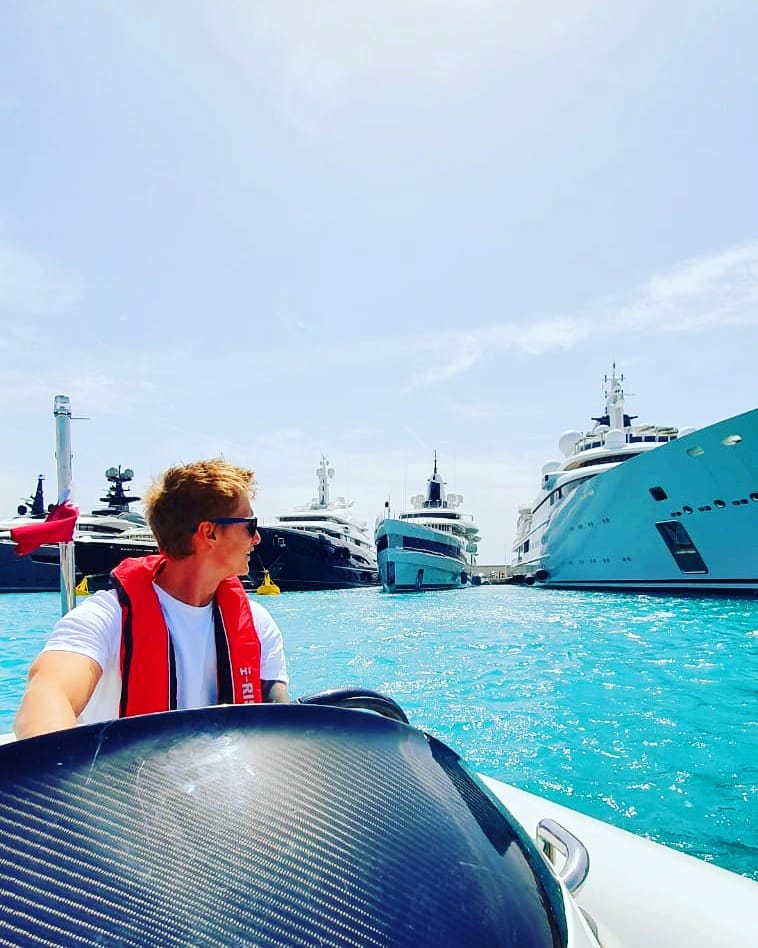
Yacht Deckhand Premium STCW
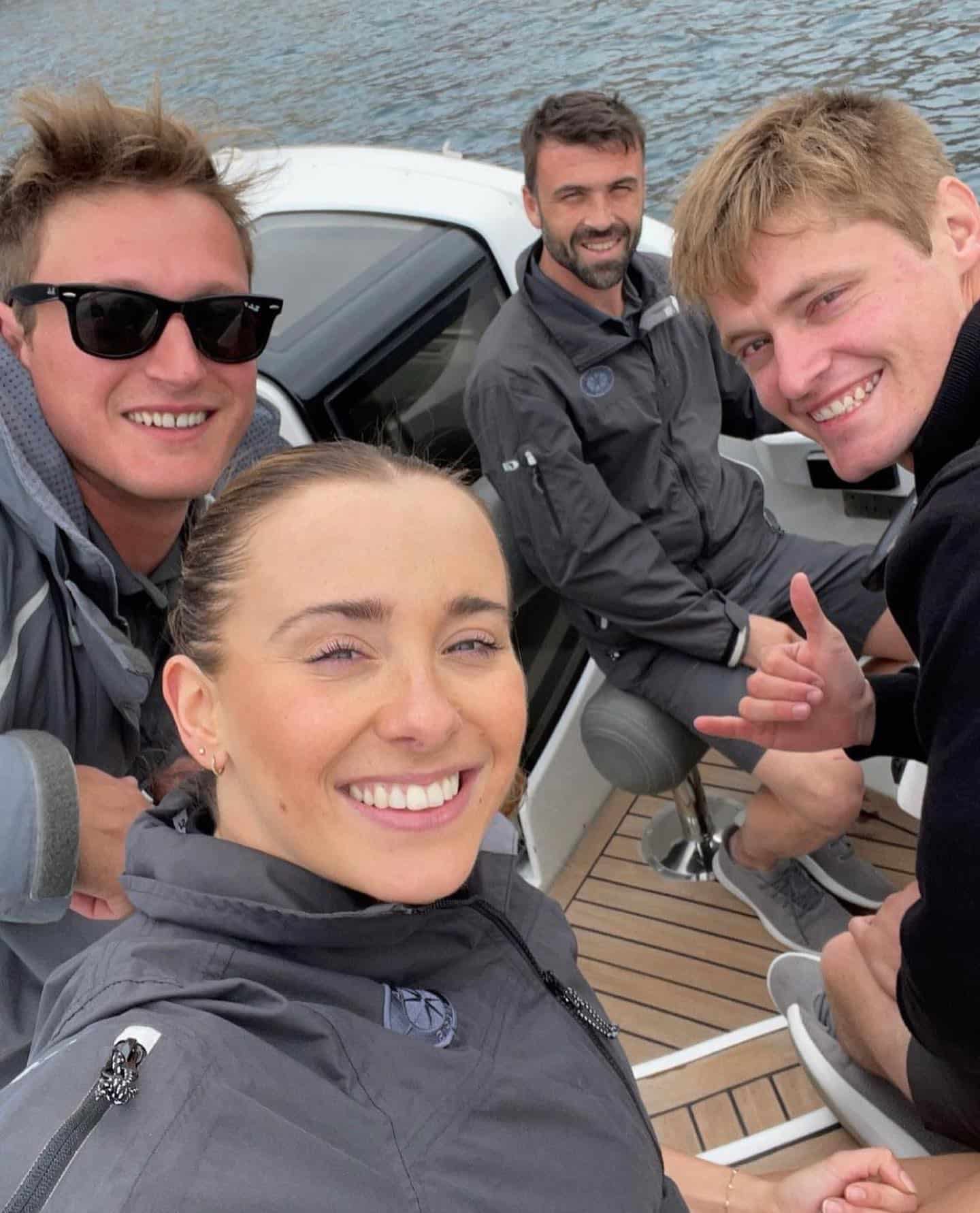
Yacht Stewardess Premium STCW
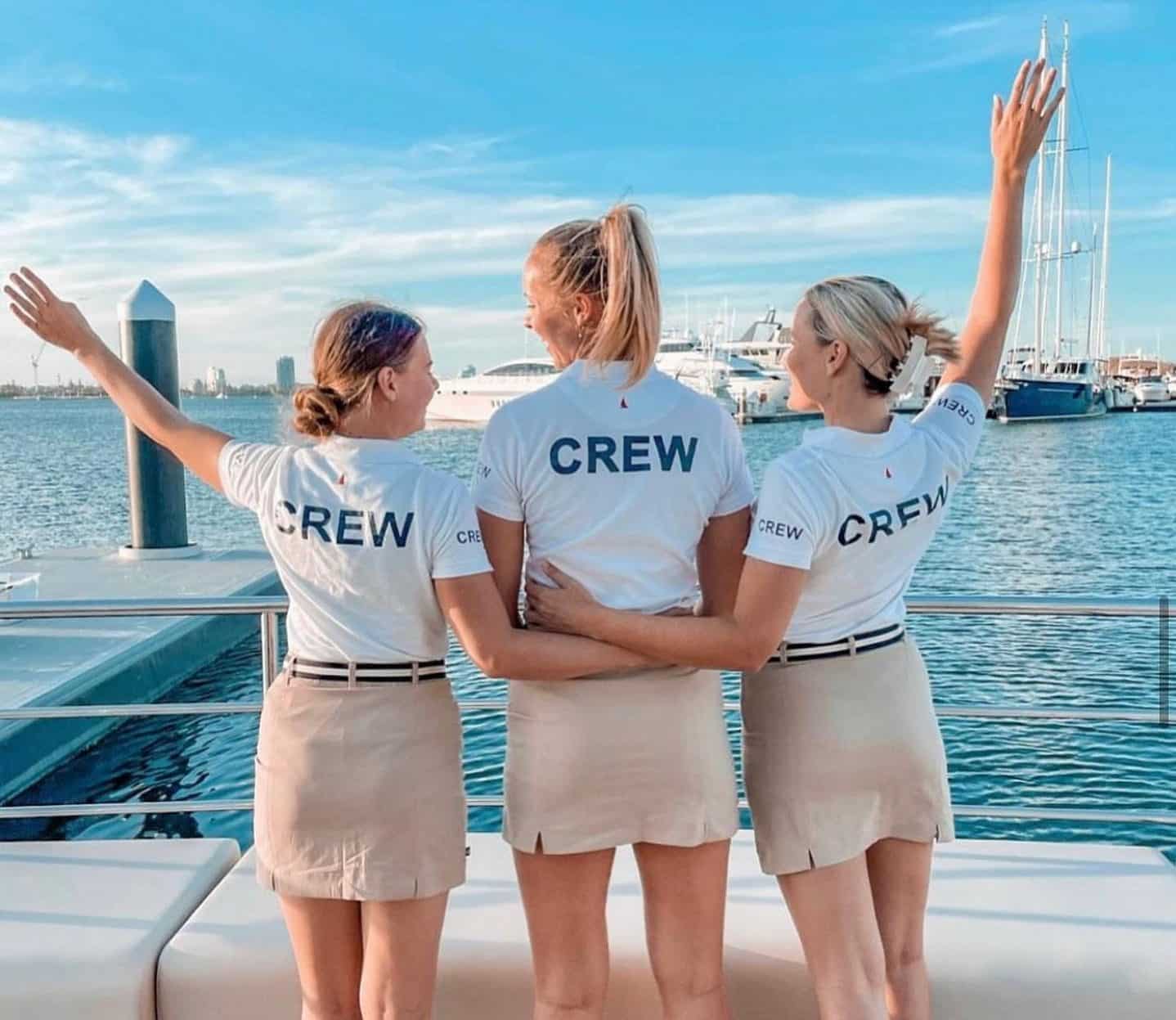
Yacht Stewardess Full STCW
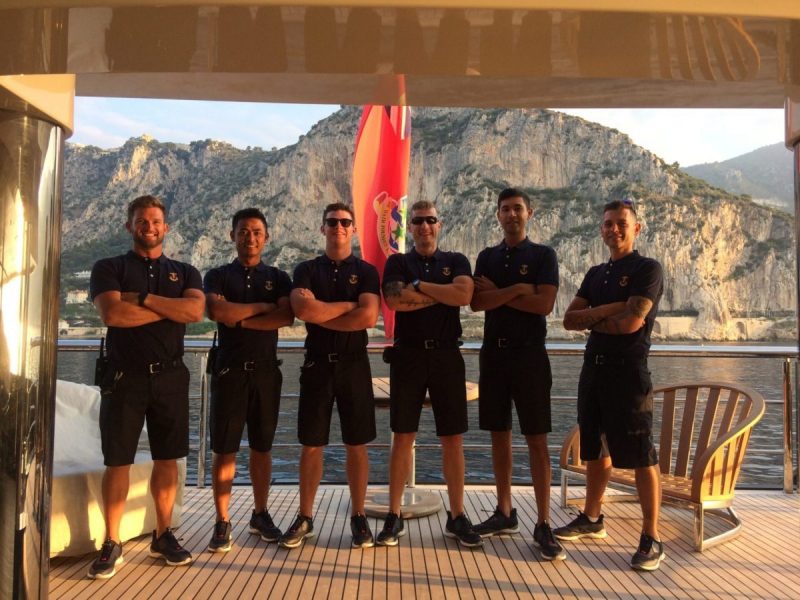
Superyacht Deckhand Full STCW

Top 10 best places to find a Yacht job in the Med 2024?

Dockwalking Yacht Crew guide

Yacht Crew Salary 2024

Yacht Stewardess Salary 2024

Yacht Deckhand Salary 2024
Best superyacht training in germany – yacht crew, superyacht crew training europe.
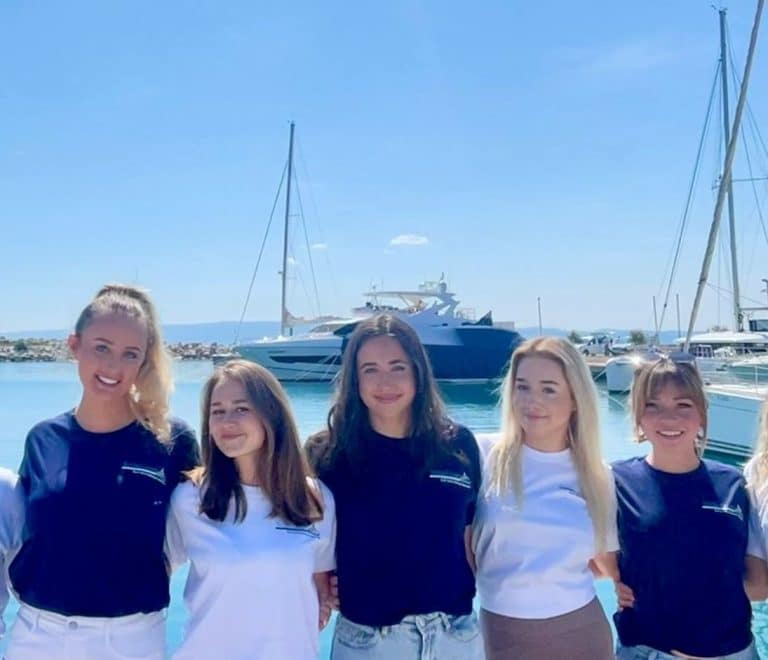
3 next bookings get 50€ free. Use free code “yachtie50” at checkout.
2 next bookings get 50€ free. Use free code “yachtie50” at checkout
Get free yacht cv and yacht job offers
Yacht Dreaming
What Does CV Mean in Yachting? Exploring the Basics of Yacht Terminology

Yachting is one of the most luxurious and rewarding ways to travel. Whether you’re looking for a short weekend getaway or a month-long adventure, the Mediterranean offers some of the world’s most impressive yachting destination s.
From the stunning waters of Spain and Italy to the rugged coastline of Croatia and France, there’s something for everyone in this beautiful region. Why not take the plunge and explore the best yachting destinations on the Mediterranean? With the right planning and preparation, you’re sure to have an unforgettable experience.
Benefits of Yachting
Yachting is one of the best ways to explore the Mediterranean, providing a unique way to see the sights and experience the culture. It offers you a chance to sail in luxury and comfort, with the added benefit of being able to make stops and explore new places.
Yachting lets you explore the Mediterranean in total privacy – something that is increasingly hard to find in busy tourist resorts. And with the different yachting destinations available, you can tailor your trip to your own tastes and interests. Yachting also provides great value for money.
You can find excellent deals on yachting packages, and you can enjoy the convenience of having everything you need on board. You can avoid the hassle of airport queues, long security checks, and the expense of accommodation. With luxury cabins, gourmet meals, and experienced crew members, you can enjoy an unforgettable experience on the Mediterranean.
Spain offers some of the best yachting experiences in the Mediterranean. From the sunny beaches of Alicante to the picturesque fishing villages of Costa Brava, Spain’s coastline is sure to provide an unforgettable experience. Its cities, such as Barcelona and Valencia, offer a unique mix of modern and ancient culture.
The Balearic Islands provide beautiful beaches and luxurious resorts, making them perfect for yachting.
Majorca is especially great for those who want to explore the sea in style, with its deep blue waters and stunning views. Along the Costa del Sol, the fishing villages of Nerja, Marbella, and Malaga are ideal for those looking to enjoy some of Spain’s finest seafood. The waters of the Canary Islands provide great opportunities for sailing and exploring the landscape. No matter what type of experience you’re looking for, Spain has some of the best yachting spots in the Mediterranean.
Popular Yachting Locations in Spain
Yachting in Spain is one of the best experiences you can have on the Mediterranean! The country is home to some of the most gorgeous beaches, historical sites, and delicious cuisine. From the Costa del Sol to the Balearic Islands, you’ll be spoiled for choice.
Popular destinations include Barcelona, Mallorca, Ibiza, and Costa Brava. Barcelona is the perfect destination for a weekend break, with its iconic architecture and vibrant nightlife.
The Balearic Islands are great for sailing, with their crystal-clear waters and picturesque coastline.
Ibiza is known for its lively atmosphere, while Mallorca and Costa Brava offer beautiful beaches, delicious seafood, and plenty of activities. When it comes to yachting, there’s plenty of options to choose from. You can rent a boat or join a charter for a more exclusive experience.
From catamarans to motorboats, there’s something for everyone.
Many charters also offer tailored trips, so you can customize your experience to your liking. If you’re looking for a longer adventure, there are lots of ports to explore along the Spanish coast.
Spain offers plenty of marinas for those who want to dock and explore the country on land. Whether you’re looking for a city break or a peaceful retreat, there’s always something to do. With its stunning coastline, Mediterranean climate, and vibrant culture, Spain is a great destination for anyone looking for an unforgettable yachting experience.
Italy is a great destination for yachters who want to experience luxury and beauty. From the stunning coastal towns to the beautiful Amalfi Coast, there is something for everyone. You can visit the ancient cities of Rome and Venice, explore the vineyards of Tuscany, or take in the scenic views of the Mediterranean Sea.
Some of the top yachting locations in Italy include Sicily, Sardinia, and the Italian Riviera.
All of these areas offer amazing sailing experiences with plenty of sights to see and delicious food to enjoy. The balmy climate and crystal-clear waters make it a perfect spot for sailing and enjoying some of Italy’s most beautiful scenery. Whether you’re looking for a short getaway or a longer stay, Italy is one of the best yachting destinations in the Mediterranean.
Popular Yachting Locations in Italy
Head to Italy for the ultimate Mediterranean yachting adventure! The Italian Riviera is one of the most picturesque yachting locations in the region, boasting stunning views of the Mediterranean Sea and the nearby coastline. The region is home to several ports where you can overnight your boat.
If you’re looking for a more laid back experience, consider sailing around the islands of Sicily or La Maddalena. These islands are known for their beautiful crystal-clear waters, perfect for swimming or snorkeling.
For a more luxurious yachting experience, you might opt for the Amalfi Coast or the Venetian Lagoon.
You can find some of the finest restaurants, hotels, and nightlife in Europe. And if you’re looking for a unique experience, the Aeolian Islands are a must-see. These islands feature some of the most stunning beaches and stunningly clear waters that you’ll ever see.
Croatia is a great yachting destination. With stunning coastal views and plenty of ports to explore, it’s no wonder why this is one of the top spots for sailing.
From the historical towns of Dubrovnik and Split to the pristine beaches of the Adriatic Islands, Croatia is sure to have something to offer even the most seasoned sailors. You can explore the coast with day trips or spend a few weeks discovering the many hidden gems along the coast.
With plenty of places to dock, you can easily find a spot to call home. Whether you’re looking to relax or have an adventure, Croatia has it all. The waters are known for their clear visibility, making fishing, diving and snorkelling popular activities.
If you’re looking for an adrenaline rush, you can try your hand at windsurfing, kitesurfing, or sailing. With plenty of options for everyone, Croatia is the perfect destination for a luxurious sailing holiday. If you’re looking for an unforgettable yachting adventure, look no further than Croatia!
Popular Yachting Locations in Croatia
Croatia is an amazing destination for a yachting holiday. From the glittering Adriatic Sea, to the rugged coastlines and stunning islands, Croatia has a lot to offer. The spectacular Kornati archipelago, where nature has created more than 140 islands, is a perfect place for exploring by boat.
The coastal towns of Dubrovnik and Split offer plenty of maritime fun, with their bustling harbors and great restaurants.
And if you’re looking for a bit of adventure, the islands of Brac, Hvar and Vis are great for sailing, snorkeling, and swimming in the crystal clear waters. If you’re looking for an unforgettable yachting experience, Croatia is the place for you.
The Dalmatian Coast is one of the most popular yachting spots in Croatia. With its rugged cliffs, hidden coves, and crystal clear bays, it is the perfect place to explore by boat. The Kornati National Park is also a great destination for yachting, with its stunning landscapes, numerous islands, and sheltered anchorages.
Whether you’re looking for some peace and quiet, or some exciting nightlife, Croatia is sure to have something to offer. The Croatian islands also provide plenty of excellent spots for yachting.
With its unspoiled beaches, secluded coves, and breathtaking scenery, the islands are a true paradise. From the tranquil waters of the Adriatic Sea to the vibrant nightlife of the Croatian islands, there’s something for everyone. Whether you’re looking for an adventure, a romantic getaway, or just a chance to relax, yachting in Croatia is sure to be an unforgettable experience.
France offers some of the best yachting experiences in the Mediterranean. From the stunningly beautiful beaches of the Cote d’Azur to the bustling port cities like Marseille, there’s something for everyone.
The crystal clear waters of the Mediterranean provide ideal conditions for sailing and the sheer number of ports to explore means you’ll never get bored. Don’t forget to check out the smaller villages along the coast, they offer great anchorages and some of the best seafood in the area.
For the more adventurous, there’s always the option of island hopping between the hidden coves and inlets. The French Riviera is a must-see for any yachting enthusiast. With picturesque harbors and stunning views of the Mediterranean, it’s easy to see why it’s such an iconic destination.
Don’t forget to check out Saint-Tropez, Cannes and Monaco, all of which boast some unique sights and attractions. Head inland and explore the countryside, you’ll find hidden regional delights like Cassis or Bandol, small fishing villages with some of the best seafood in the area.
No matter what your level of experience, France has something for everyone. With everything from the bustling port cities to the hidden coves and inlets, it’s the perfect destination for an unforgettable yachting holiday. So grab your keys and set sail – you won’t be disappointed!
Popular Yachting Locations in France
If you’re looking for the ultimate yachting experience, France is the place for you. From the glittering lights of Cannes to the serene beaches of Brest, there’s something for everyone.
If you’re looking for a sailing adventure, the French Riviera is a great place to start. With its beautiful beaches and charming ports, the Mediterranean Sea is just waiting to be explored. You’ll find plenty of luxurious yachts to hire, perfect for a romantic getaway or a family holiday.
And if you’re looking for a more challenging journey, the Atlantic coast has plenty of islands and ports to explore.
No matter what type of yachting experience you’re looking for, France has something to offer. If you want to make the most of your yachting adventure, take some time to explore the French countryside. With its stunning views, charming villages, and lush vineyards, the countryside is a great place to unwind.
And if you’re feeling adventurous, take the time to explore a few of the many ports and islands. With its stunning beaches and abundance of activities, the French coast has something for everyone. Whether you’re looking for a luxury yachting experience or a more adventurous journey, France is the perfect destination for you.
What are the Benefits of Owning a Yachting Residence?
What Are the Benefits of Z Yachting?
© 2024 Yacht Dreaming

LISTEN TO THE PODCAST
Free masterclass, yachting courses, watch my free live masterclass "how to get a job on a yacht" .

back to blog
7 Ways To Nail Your First 7 Days As A Yacht Stew.
Freebie alert: Junior Stews Download now
![[PenelopeTemplate]taylor-simpson-azI_KfAnC8E-unsplash martini mondays public relations and strategy brisbane](https://static.showit.co/400/-j3kPzfNRjm8JSippHi7Dw/shared/penelopetemplate_taylor-simpson-azi_kfanc8e-unsplash.jpg)
Blog Categories
Superyacht jobs, life onboard, about yachting, listen now.
Hear about the real yacht life, info on how to kickstart your superyacht career and tips on becoming a super stew.
The Seaworthy Stew: Podcast
![[PenelopeTemplate]content-pixie-VIh-B-bNZMc-unsplash martini mondays public relations and strategy brisbane](https://static.showit.co/400/sgOjawVZS0WmIQiKY2Ntrg/shared/penelopetemplate_content-pixie-vih-b-bnzmc-unsplash.jpg)
A Chief Stew with 6+ years experience in the superyacht industry. I help aspiring crew confidently land their first job and teach the skills needed to be a stand out YACHT STEW.
Hey, I'm Jess

5 Tips On Getting A Couple’s Job In Yachting
Superyacht jobs, filed under:.

Tune in via
Listen now- check out the seaworthy stew podcast here.
Are you wondering about couple’s positions in yachting and if there’s any chance of working together? In this episode, I share 5 tips for the lovebirds wanting to start a career working on superyachts with their partner.
You may have been planning to do this solo and coincidentally meet the man of your dreams 3 months prior and they decide to be a part of the adventure, it happens! Or maybe it’s been a #couplegoal for you two for a while now!
Either way it’s possible, you will both just need the right attitude and perseverance, to find work together in the yachting industry
So I have 5 Tips for getting your first couple’s job onboard…
- If you don’t have any yachting experience apply for jobs individually at first – Think of this as a stepping stone to the couples job. There is a much better chance of you getting a foot in the door if you both get a job separately in the beginning. The industry is competitive and couples positions are in high demand! Most likely if you have no experience onboard and have not been in a relationship for over a year the chance of getting your first job on a yacht will be fairly slim. This stepping stone is what a lot of couples I know had to do in the beginning to work together. Something important to remember is that you need to be prepared front the beginning to make compromises. From your ideal positions onboard to crew cabin arrangements. You may get a job together but not share a cabin straight away, this is because cabin arrangements are carefully thought out to accommodate each crew member and their position onboard.
- Once you have developed a good working relationship on your first boat you can try and put your partner forward as a candidate if a position becomes available. Job turnover is higher than a usual job so you can expect positions to become available after most seasons or at least once a year. It would be good to also make sure not everyone knows everything about you and your partners relationships. It may not increase your chances of getting a job together if the whole crew knows when you have a fight with your partner or you’re upset because of something that was said. From a head of departments point of view if you hear the relationship could be the slightest bit unsteady it is unlikely we will want to bring your partner onboard. The less drama onboard the better!
- Review your Yachting CV – When applying for your first superyacht job, keep your yachting CV’s separate. Having your CV separate will look more professional and remember you are an individual with your own experiences and strengths. Once you have some experience onboard and are looking to stake the next step then you will need to have Cvs which mirror each other. Both CVs will have the same layout/formatting/style and correct length of time you have been in the relationship for.
- The boat will want to know that you have a strong relationship and if you have worked together before. It would be good to be armed with answers and to have a strong reference that can back this up. So think about this before you start applying toegtehr, you need to be convincing.
- When you have experience in yachting you should be applying for every job not just couples jobs. You never know what opportunities the boat may havewhen they look at your CV. If they like you as a candidate and you say you are looking for a couples position, better to be honest and put it out there to see if you have any luck!
So there is the 5 tips if youre thinking about couples jobs – Apply separately at first, put your partner forward on a boat you have a great working relationship with, get matching CVS, have a strong reference and apply for every job! When you are looking for a couple position it’s important to make sure you both know the goal, to get a job on the same boat. If you understand you may be working separately for a while but keep focused on that goal of working together it will make more sense when times get a little tough when you’re without them.
Well I hope that’s helped some of you love birds out there! I will have to do a podcast episode on relationships onboard as that’s a whole other ball game you’re bound to come across at some point! If you would like more information on your first steps to starting your new yachting career, I have a free ebook you can download – Click here

listen to the podcast
About .
I’m a chief stewardess with over 6 years experience working in the superyacht industry on boats up to 88m. I help aspiring yacht crew by propelling them with the know-how and tools to confidently break into the superyacht industry.
Hey, I'm Jess a friendly Yacht Stew here to help!

@THESEAWORTHYSTEW

privacy & terms
© 2020 the seaworthy stew, masterclass, listen on the podcast.

welcome, friend

IMAGES
VIDEO
COMMENTS
For example, increase the size of your name and important sections like "Certificates" or "Professional Experience" and put in bold the name of the yacht you've worked on. 3. Include a recent and professional photograph. For many people, adding a photograph may seem like an odd thing to add to their CV, however, on a yachting CV ...
Here are some steps you can use to write your own yacht crew CV: 1. Start with your personal details. The first section to add to a yacht crew CV is one that contains your personal details. This can include your name, contact information and location.
A yacht CV is a document describing your yachting skills and experience that you submit to employers as a part of a job application. It will contain details like personal information, work experience, education, and skills. The yacht experience can vary greatly. Some yachts may have only a single captain on board and a handful of passengers.
Downloadable Yacht CV Template . Use this Yacht CV link to download a basic yachting resume, fill in your personal information, and get ready to land your dream job! Yacht-CV-Template Download. Now that you have crafted the perfect Yacht CV, it is time to land your dream job.
Use action verbs and quantify your achievements where possible. For example: "Managed a crew of 6 deckhands and ensured the maintenance and cleanliness of a 120-foot luxury yacht." "Navigated the ...
1. Put a clean, professional headshot on your yachting CV. Yachting is one of the few professions where you should put a photo on your CV. Photo CVs are expected in the yachting industry, especially if you're applying for a job aboard a charter or luxury yacht, where having a polished, professional image is an essential part of the job.
A Yachting CV differs significantly from a land-based CV. It features maritime jargon, qualifications, and a photo. As well as this, it also requires a particular layout that needs to tick the relevant 'industry standard' boxes. Imagine a Captain or Chief Stew has 150 CV's on their desk. If your CV doesn't look like a Yachting CV, it's probably going straight to the shredder. It ...
A well-crafted yachting CV is essential for anyone seeking employment in the luxury yacht industry. This document serves as a professional resume and provides a detailed overview of your skills, experience, and qualifications. A successful yachting CV should be concise, well-organized, and tailored to the specific job you are applying for.
How to format your crew CV. Typically, you have between three and six seconds to catch the captain's attention. Captains don't have long to look through applications, so your CV needs to stand out right from the start. Keep it to a maximum of two pages in length - this will help your chances of landing your dream yacht job.
Jess has created a simple step-by-step guide providing all you need to create a perfect, professional yachting CV: 1. Primary Information. Start by filling in all primary information within the top half of the page, including your phone number, email, date of birth, nationality, and passport.
Tailor Your CV for Each Job Application; Customise your Yachting CV for each job application. Highlight the skills and experiences that align with the specific requirements of the yacht and crew position you're applying for. A tailored CV demonstrates your genuine interest in the role and makes you a more attractive candidate. Proofread and ...
The yachting CV is so important, we include ono-to-one support during our Superyacht Deckhand and Superyacht Steward/ess courses. This forms part of our Career Support Service. First, a bit of background to a Yachting CV. Your CV is a summary of your skills, experience, and interests. It explains why you are a good fit for the Deckhand or ...
Break down your experiences in terms or what is yachting relevant and expand your land CV. Look at all past jobs and think about every task completed in that job which could be useful on a Superyacht. #6 Do a clean up of your social media. A yachting CV now extends to captains and heads of departments doing a search of you on social media.
Writing a Yachting CV is a little different to a normal CV that you may write for a land based job. For example, if you are writing a CV for a job on a yacht, you are asked to provide a photograph and give your date of birth, which is considered discriminatory if applying for jobs on land.
Let Professional Yachtmaster Training USA help you create the perfect yachting CV / Resume with these tips & tricks from yacht industry professionals.
Example CV profile for Yacht Crew. Experienced Yacht Crew Member with over 6 years specialist experience in domestic and transatlantic yacht delivery, ensuring the safe and timely transportation of new vessels. RYA Certified Day Skipper and experienced sailor with proven skill in navigation, seamanship, and yacht maintenance.
A yachting CV is different from the CVs we are taught to write at school. There is a specific format which you need to follow and you are required to include information about yourself that you might find a little shocking and discriminatory at first, such as your photo, your date of birth as well as your nationality! ...
The Yachting CV Toolkit isn't like other CV services out there. Build a complete (stand out) Yachting approved CV in less than 24 hours. Craft one of the most important paragraphs on your CV using the secret personal profile formula.
CV templates. CV templates. This is a good example of a Yacht Engineer CV which contains all of the information that a hiring manager will need to be impressed, and presents it in a well- structured, easy-to-read format. Take some time to study and understand this CV, and refer to it throughout the writing of your own CV for best results.
Tips for formatting your Superyacht Deckhand CV. Length: Even if you've got tons of experience to brag about, recruiters don't have time to read through overly lengthy CVs. Keep it short, concise and relevant - a CV length of 2 sides of A4 pages or less is perfect for the attention spans in today's job market.; Readability: By formatting your section headings with bold or a different ...
3. Building a Strong Resume: Tips for Landing Your First Yacht Job. As a newcomer to the yachting industry, it's essential to create a compelling resume that showcases your skills, experience, and passion for the job. Start by highlighting any relevant experience you may have, such as working in hospitality, customer service, or a related field.
Yachting is one of the most luxurious and rewarding ways to travel. Whether you're looking for a short weekend getaway or a month-long adventure, the Mediterranean offers some of the world's most impressive yachting destinations.. From the stunning waters of Spain and Italy to the rugged coastline of Croatia and France, there's something for everyone in this beautiful region.
Cartoon porn comic Luna yachting - for free. View a big collection of the best porn comics, rule 34 comics, cartoon porn and other on our site. Luna: The story of the 115m yacht's €50m refit. ... cv.shiftnotes-dev.dupont.com 2024 - Porn comics, Hentai manga, Cartoon porn, Rule 34, Doujinshi and other ...
Review your Yachting CV- When applying for your first superyacht job, keep your yachting CV's separate. Having your CV separate will look more professional and remember you are an individual with your own experiences and strengths. Once you have some experience onboard and are looking to stake the next step then you will need to have Cvs ...